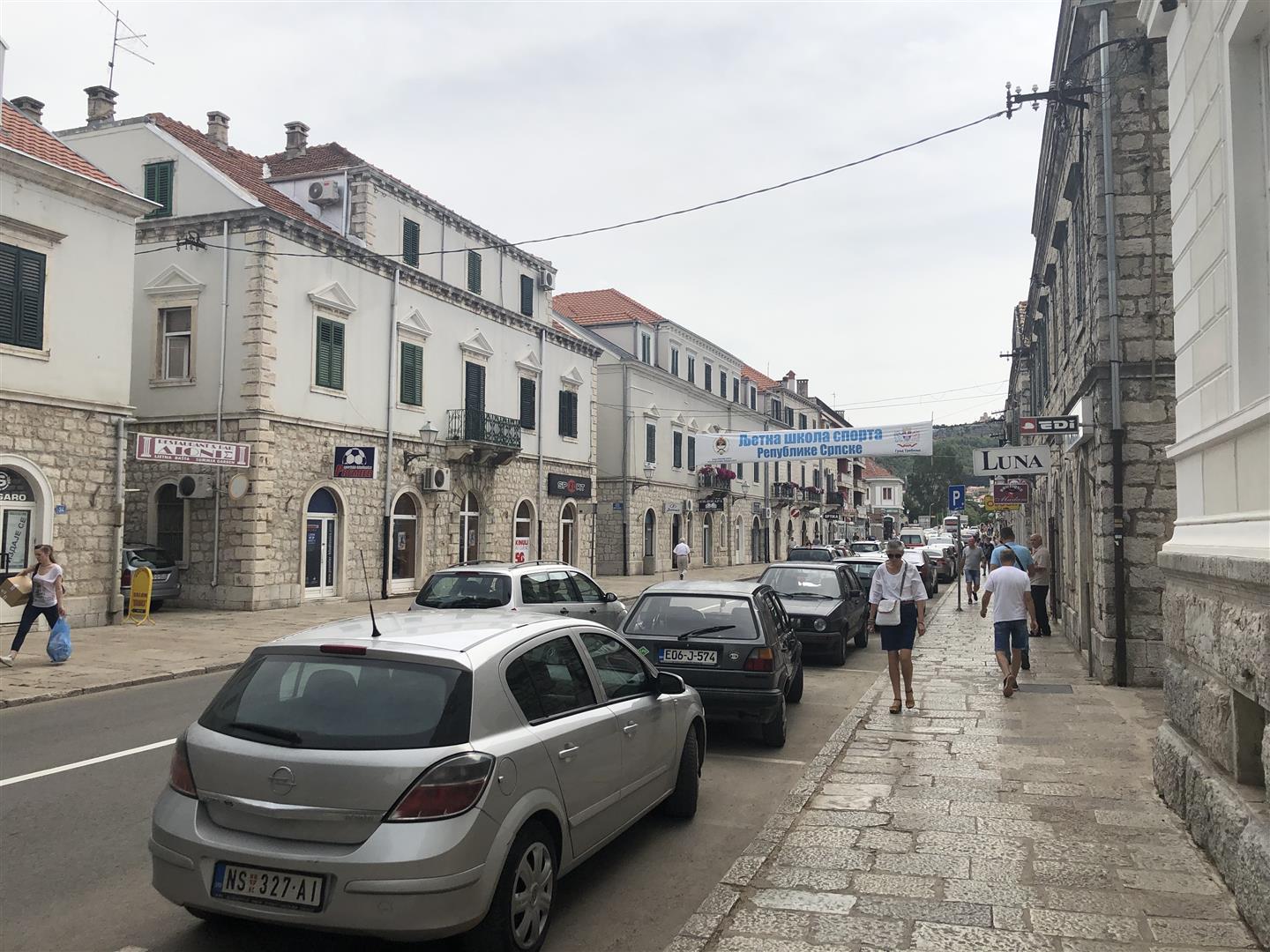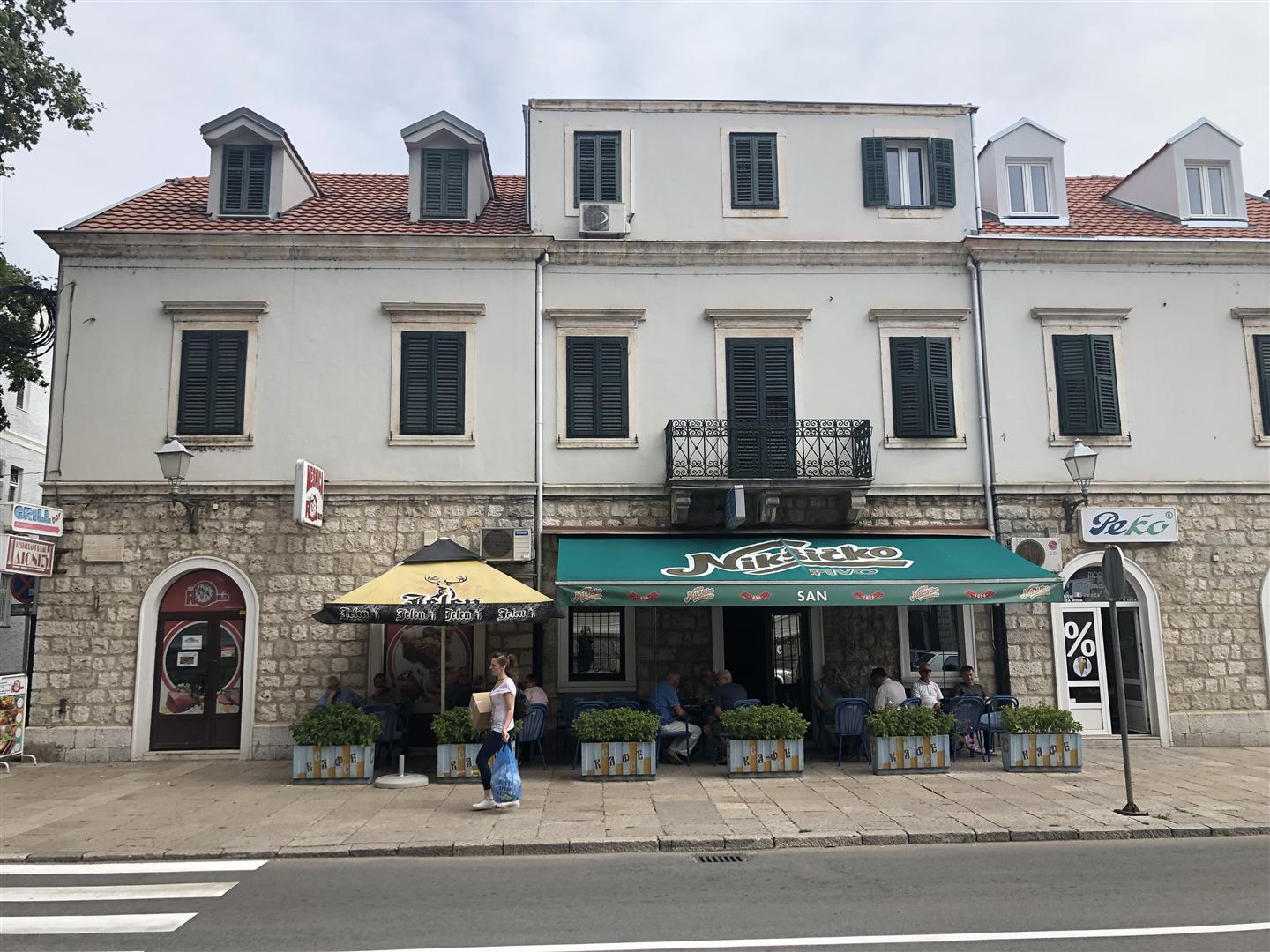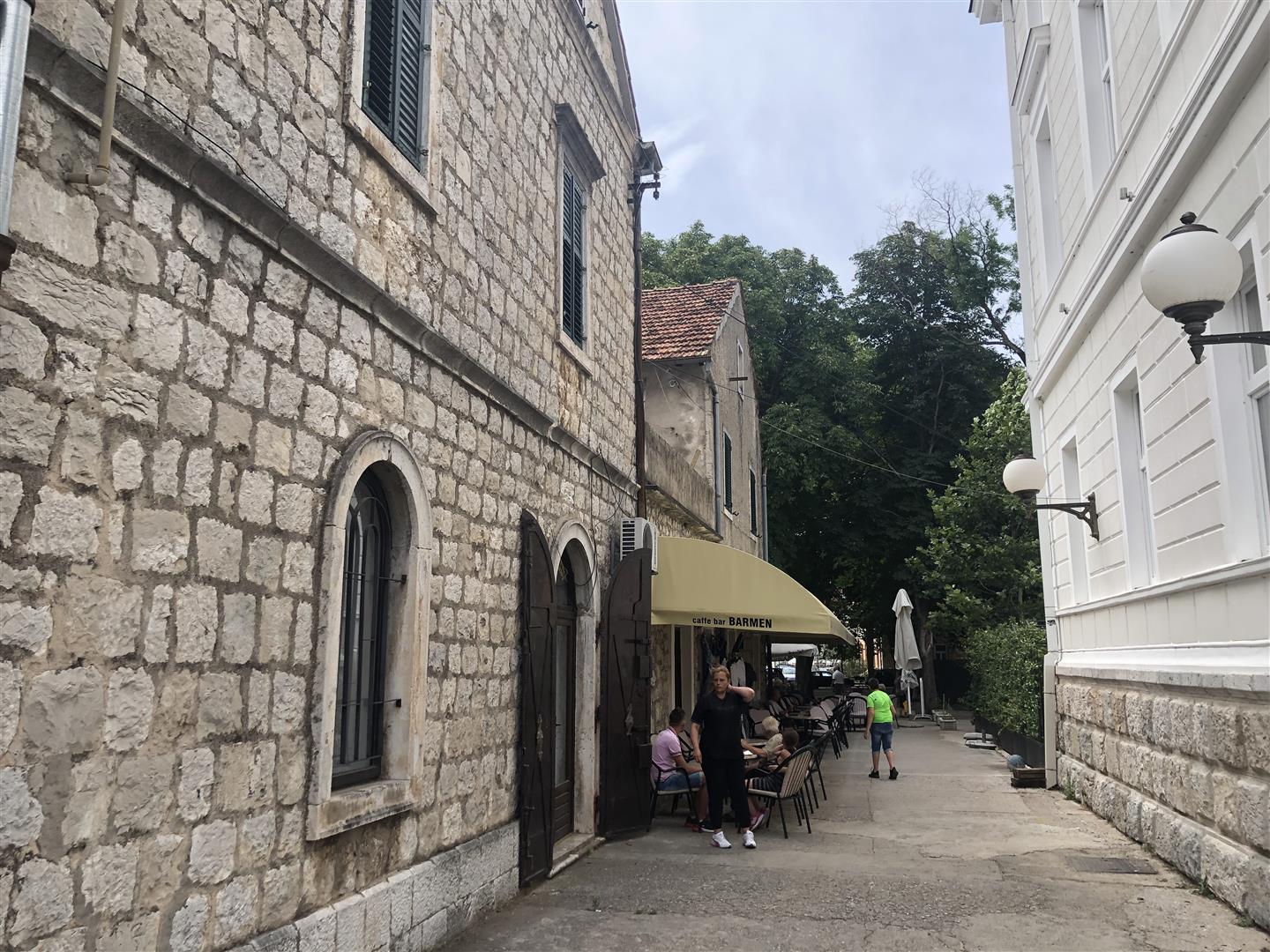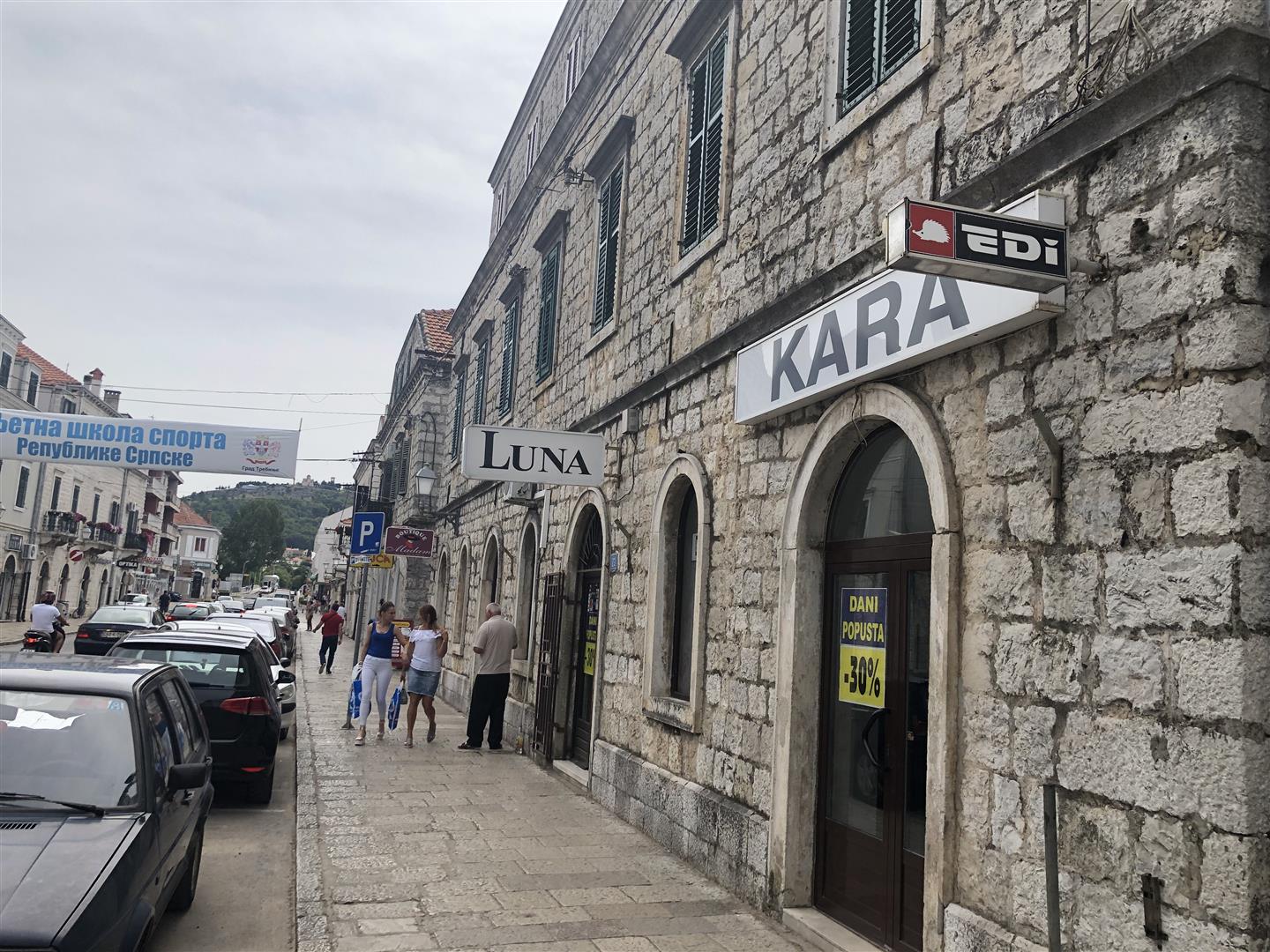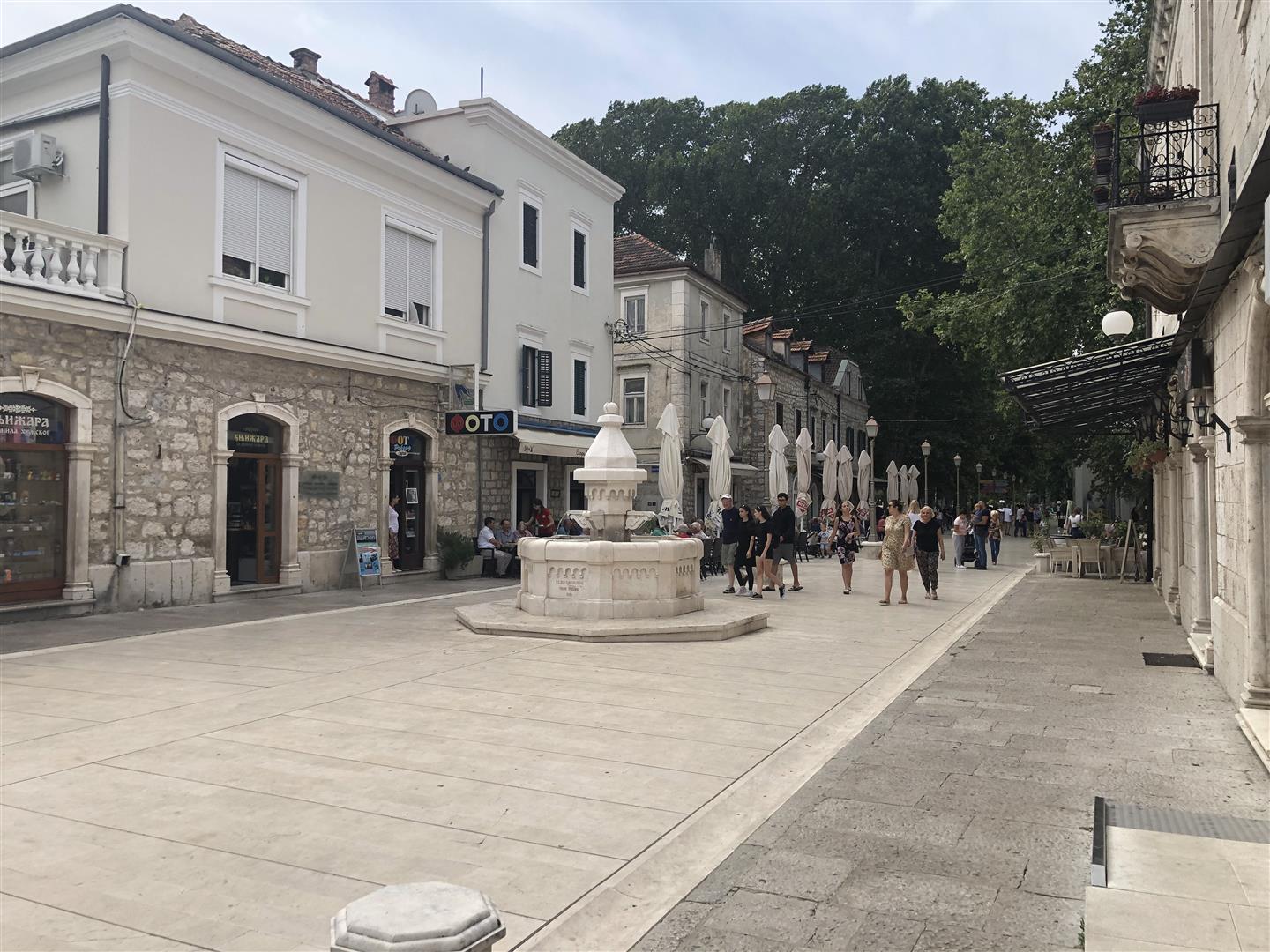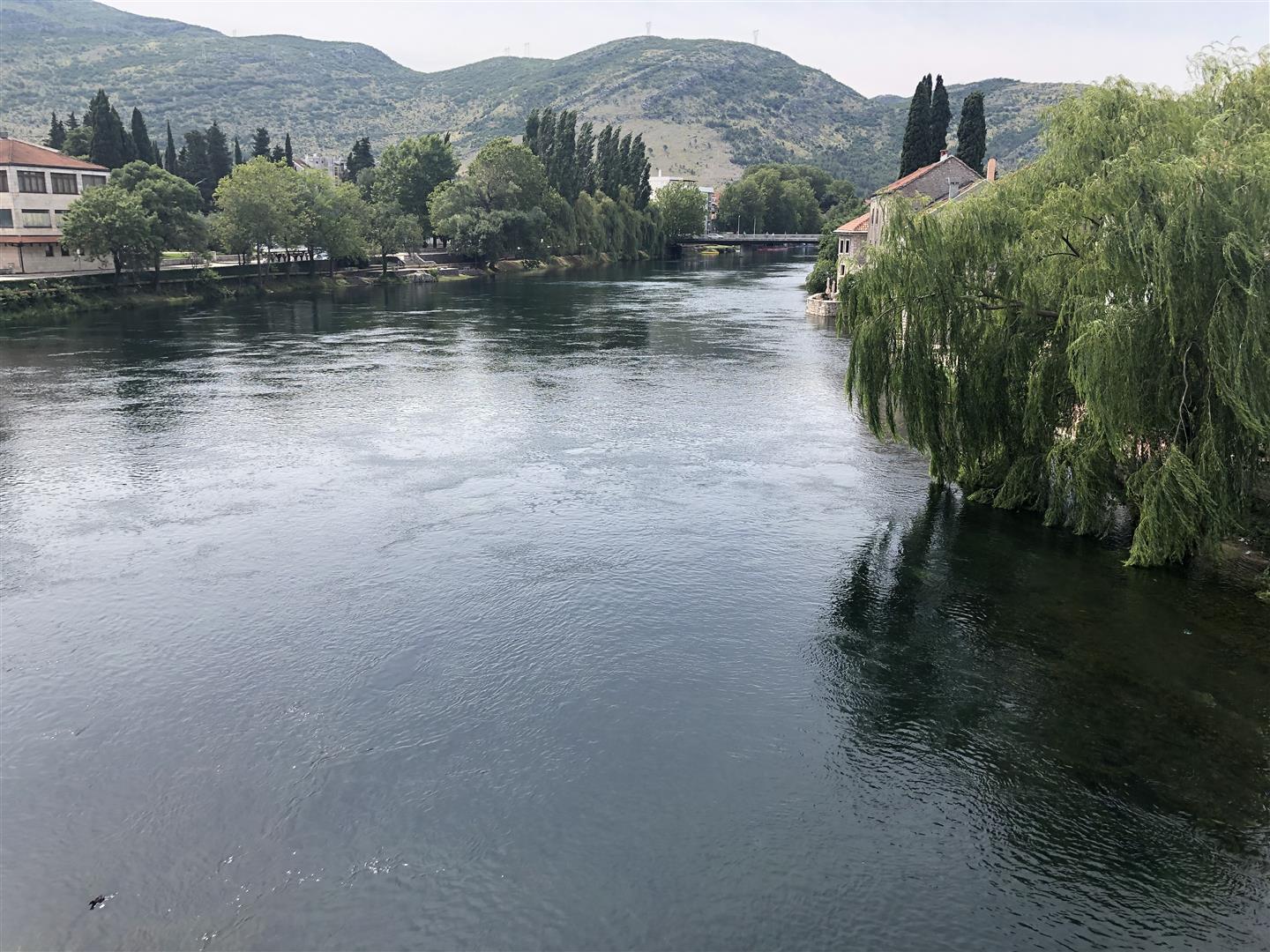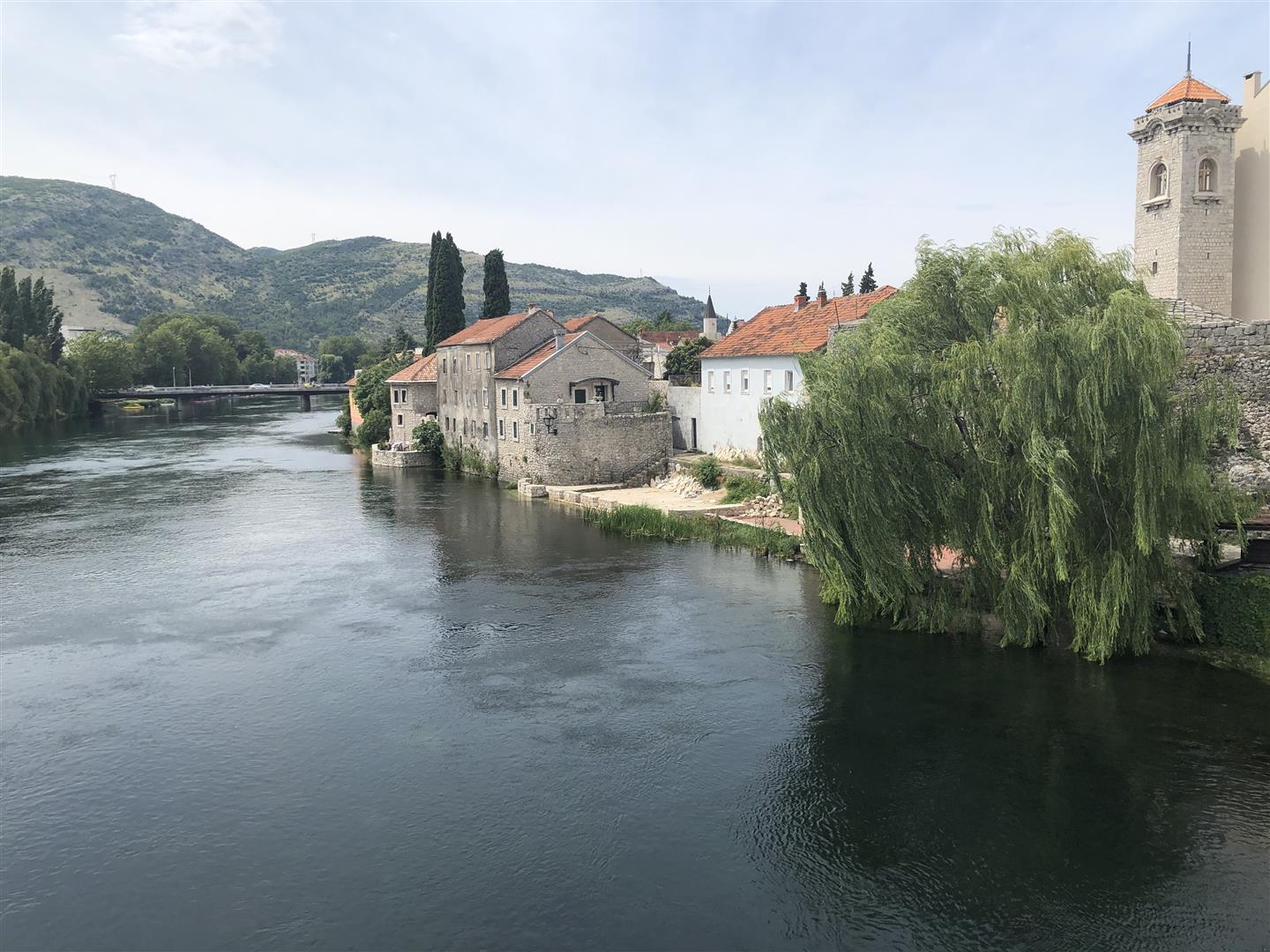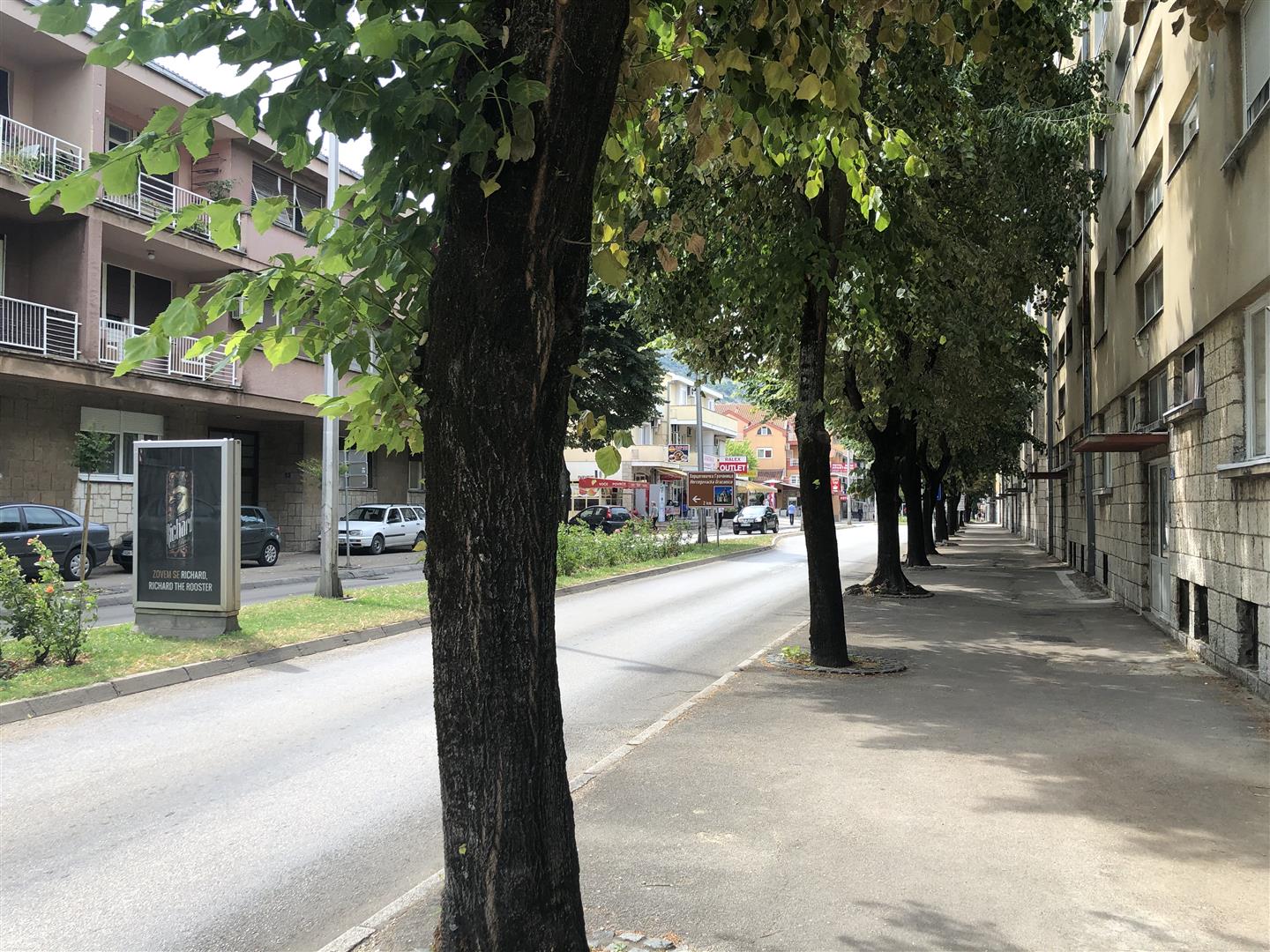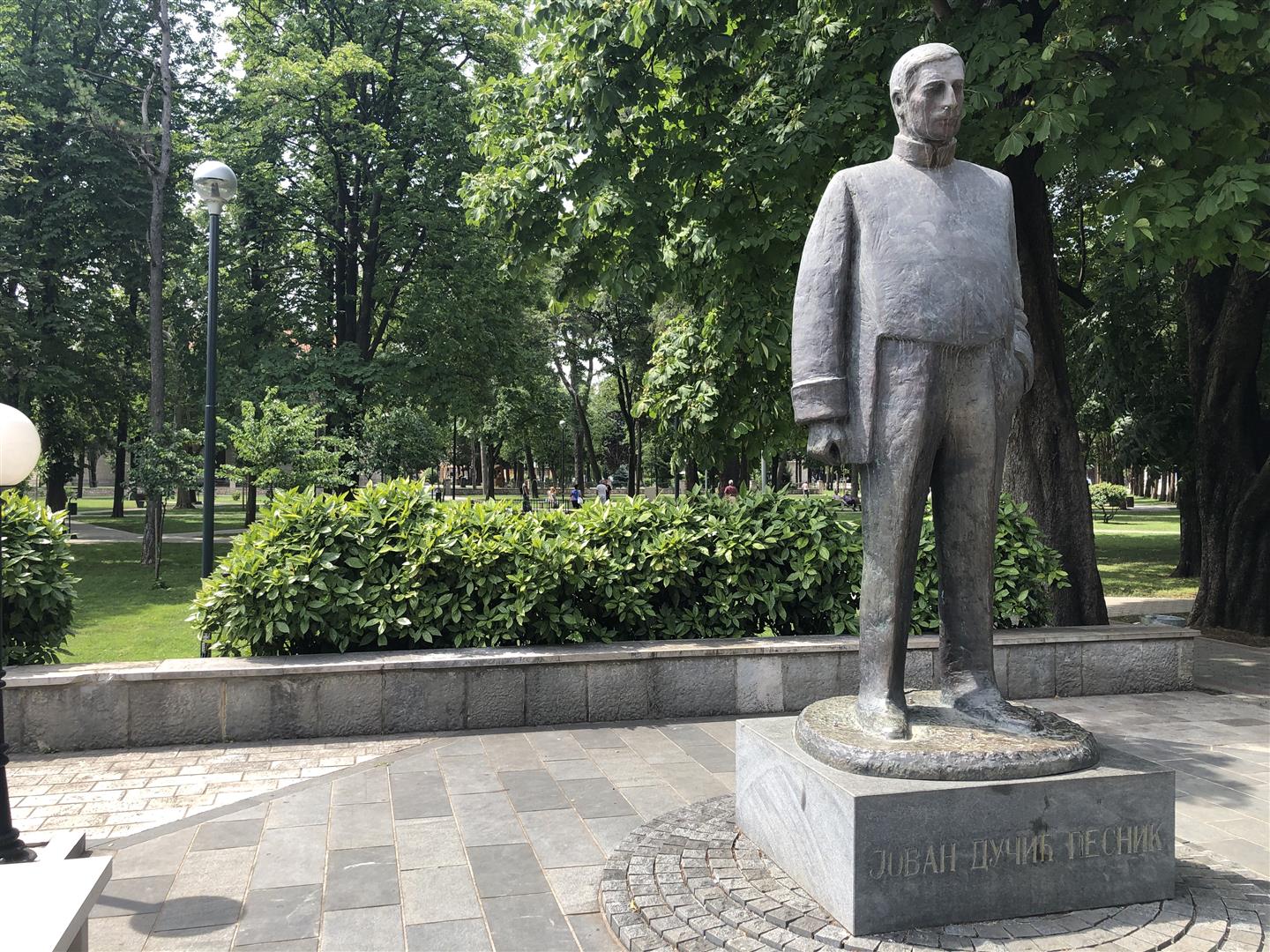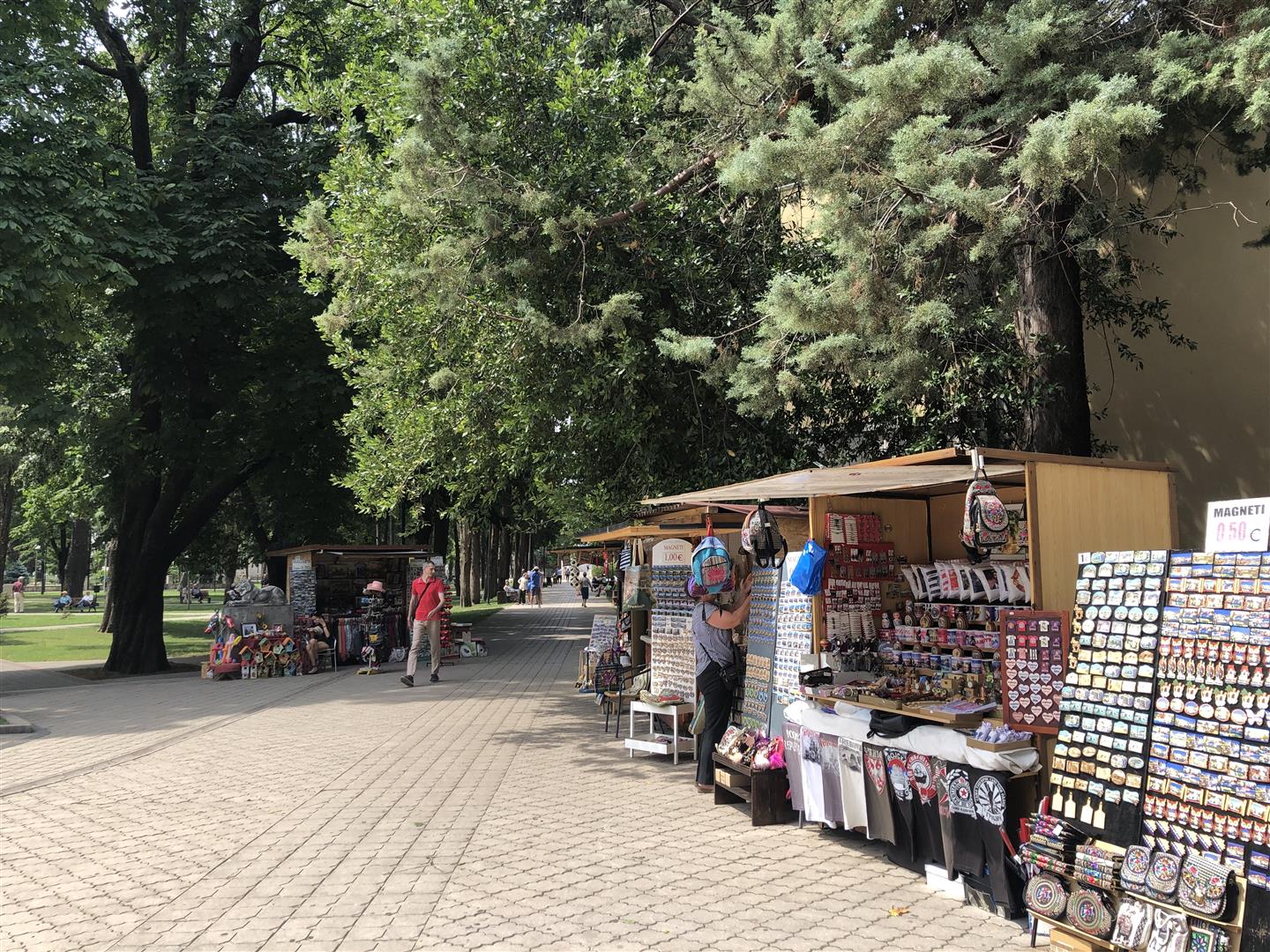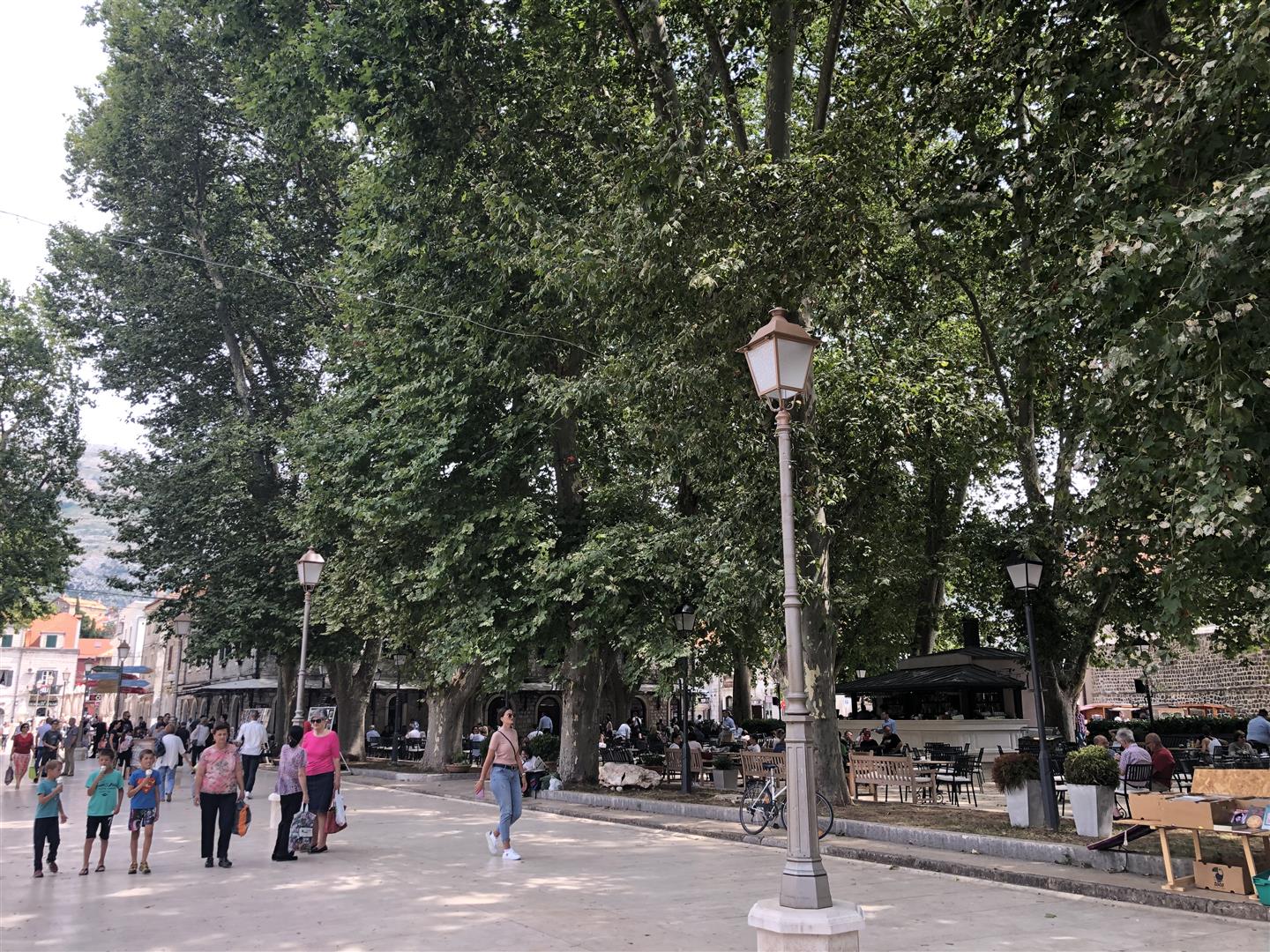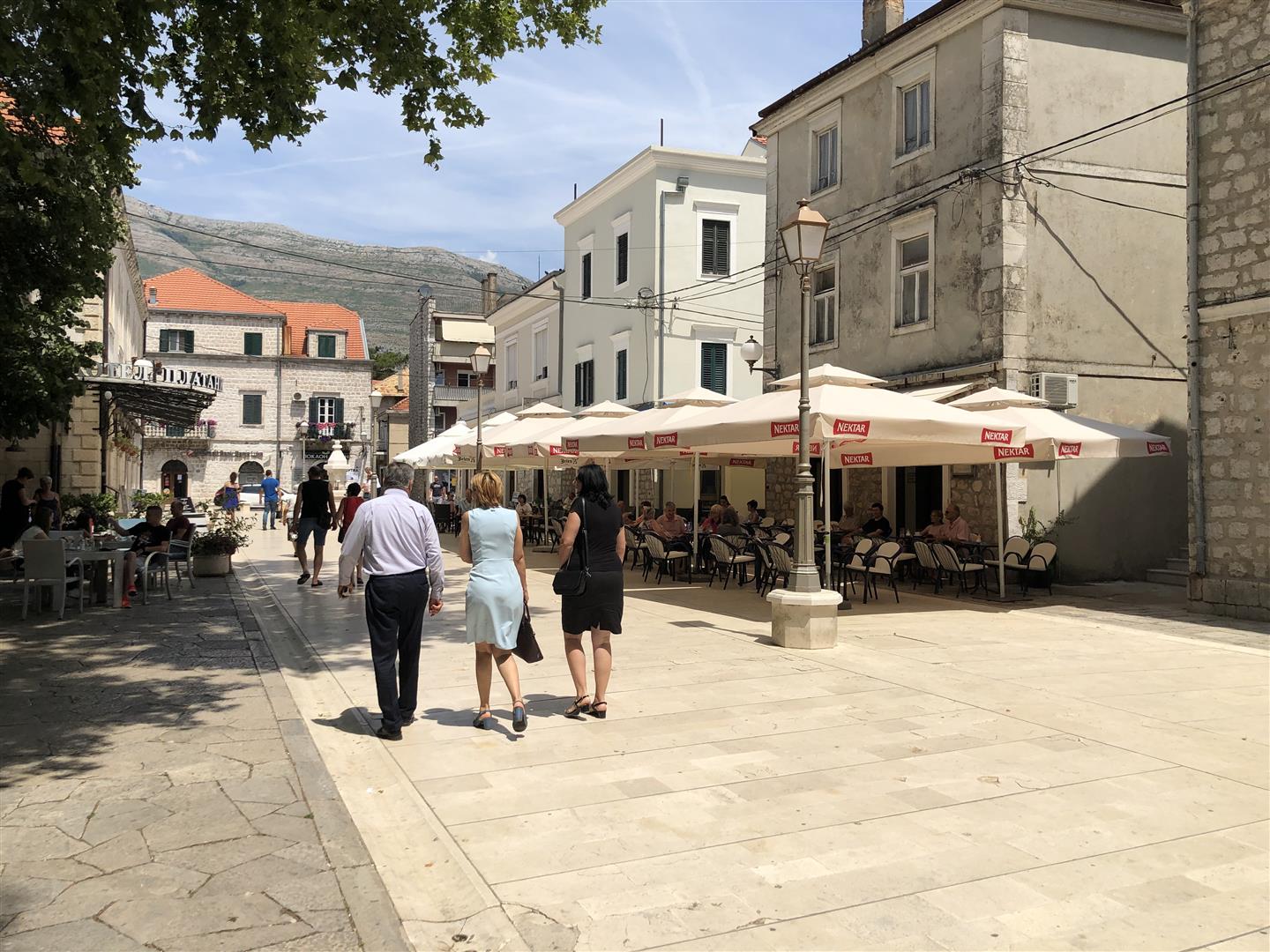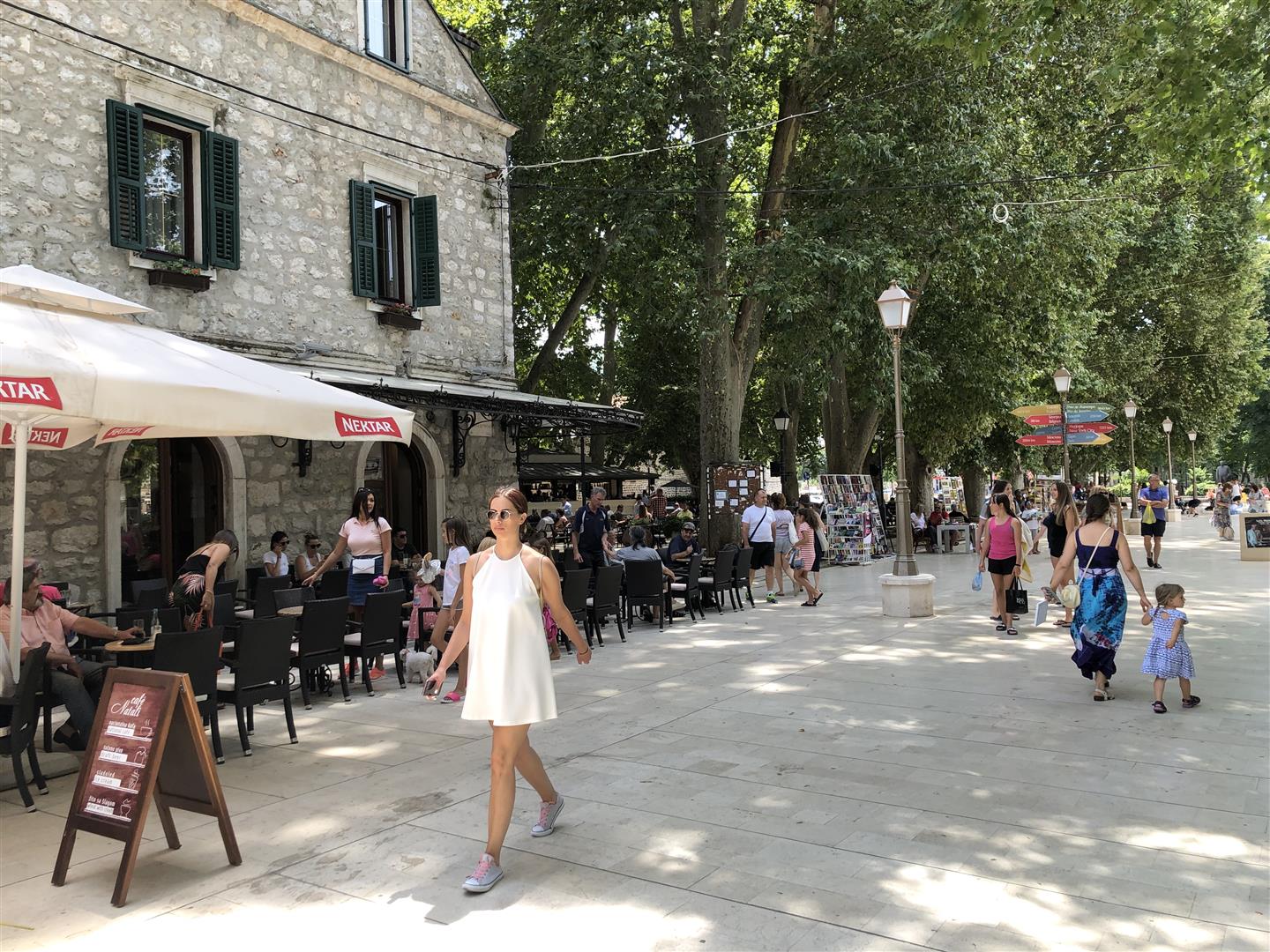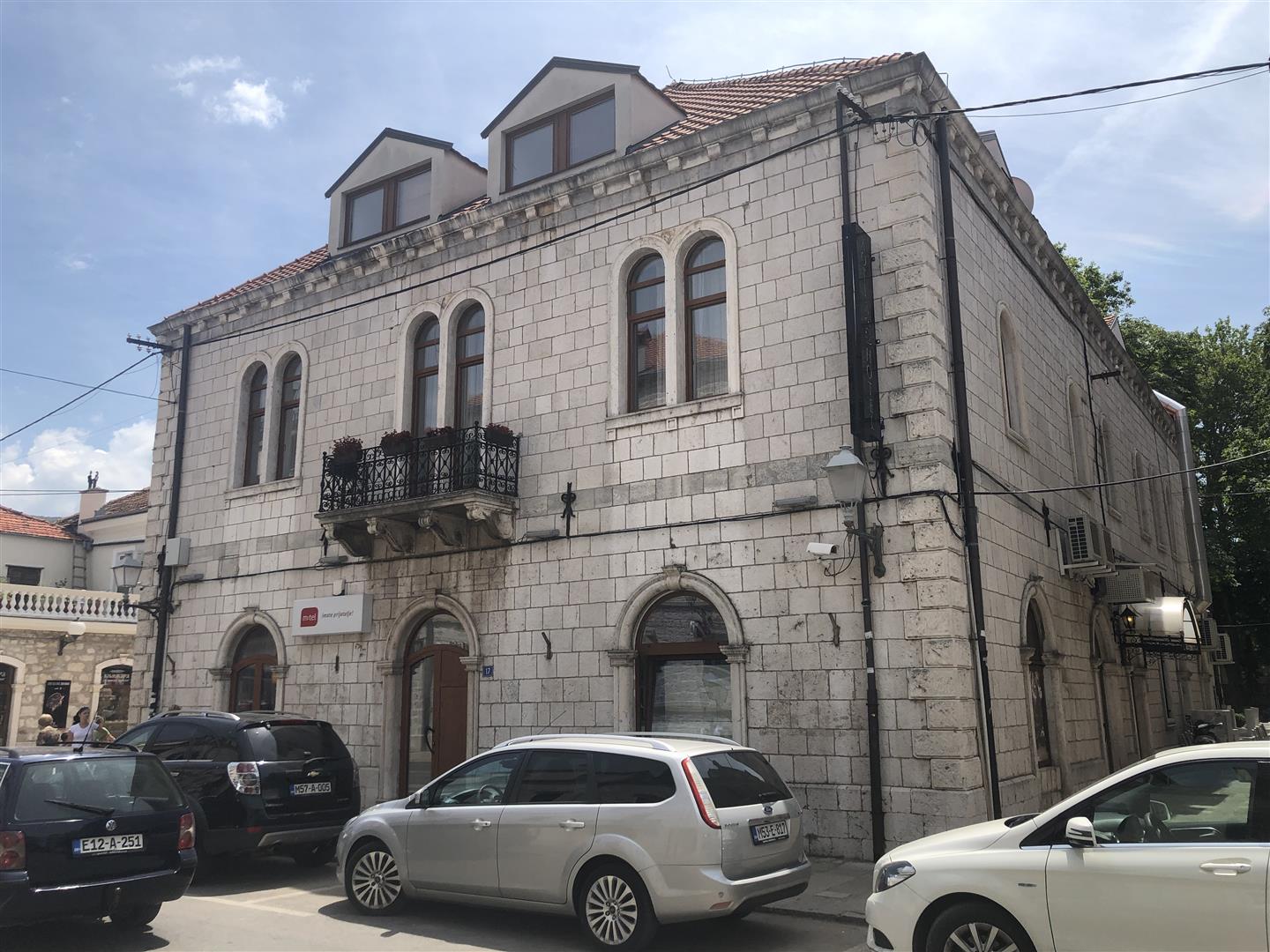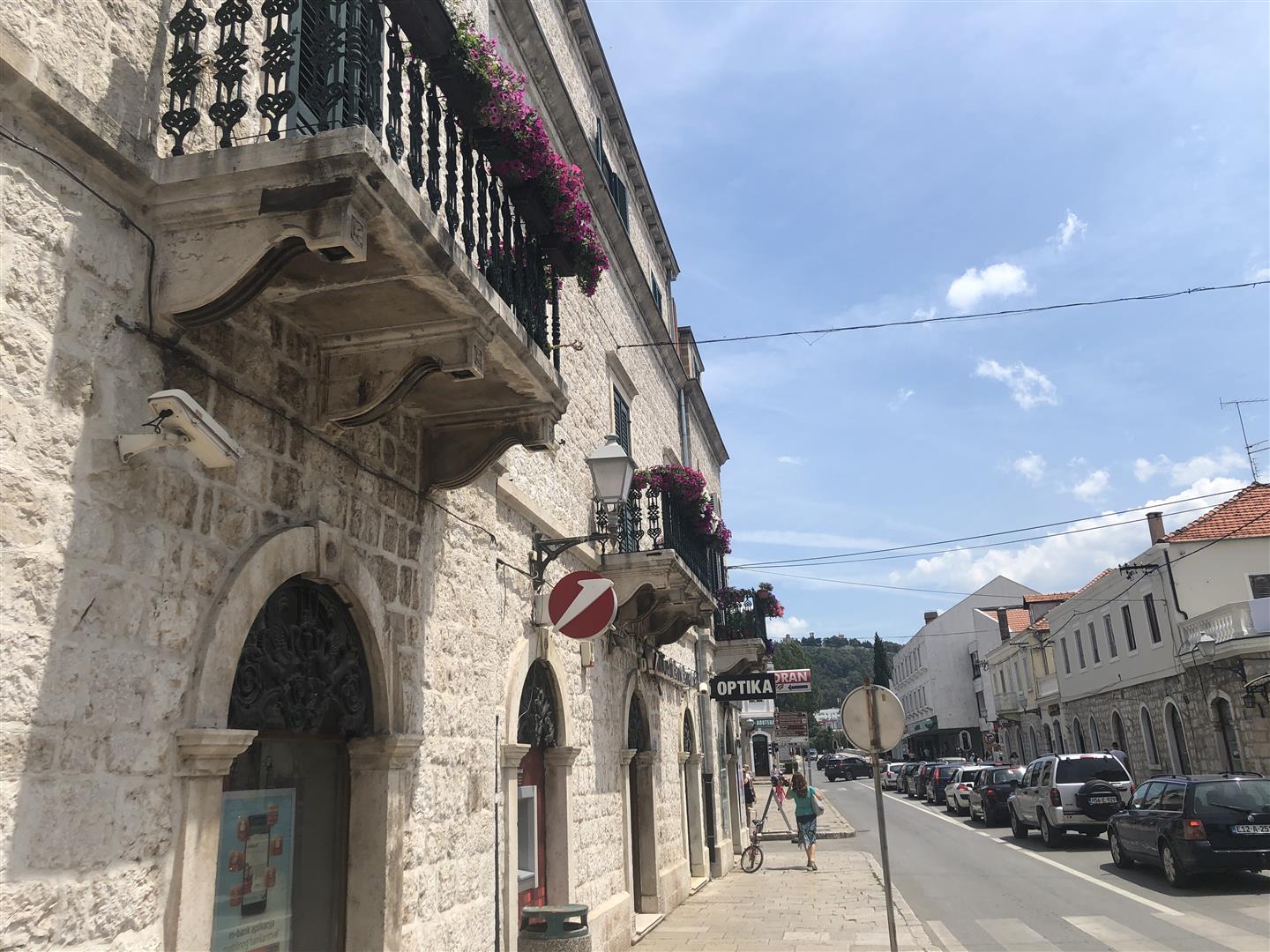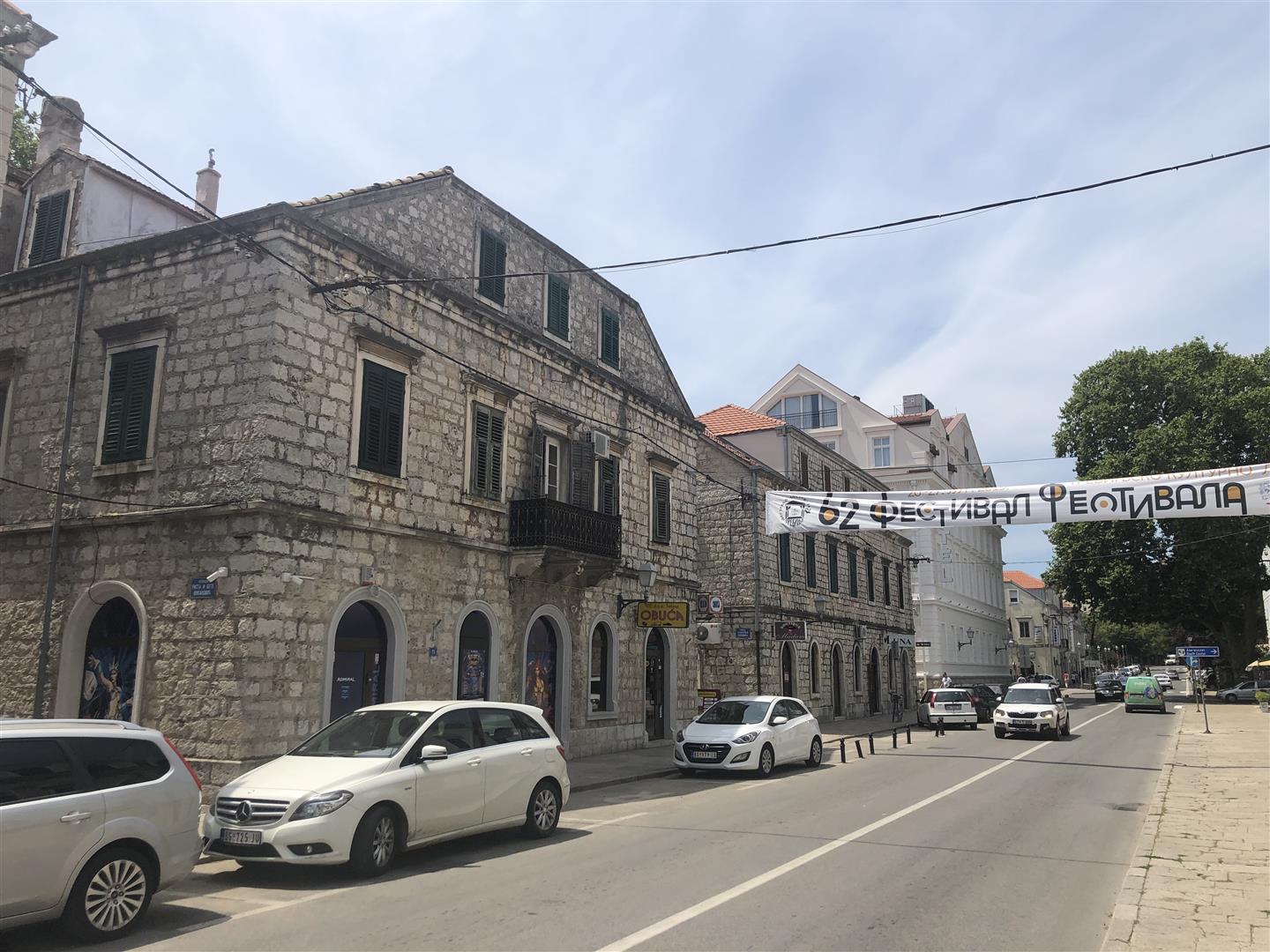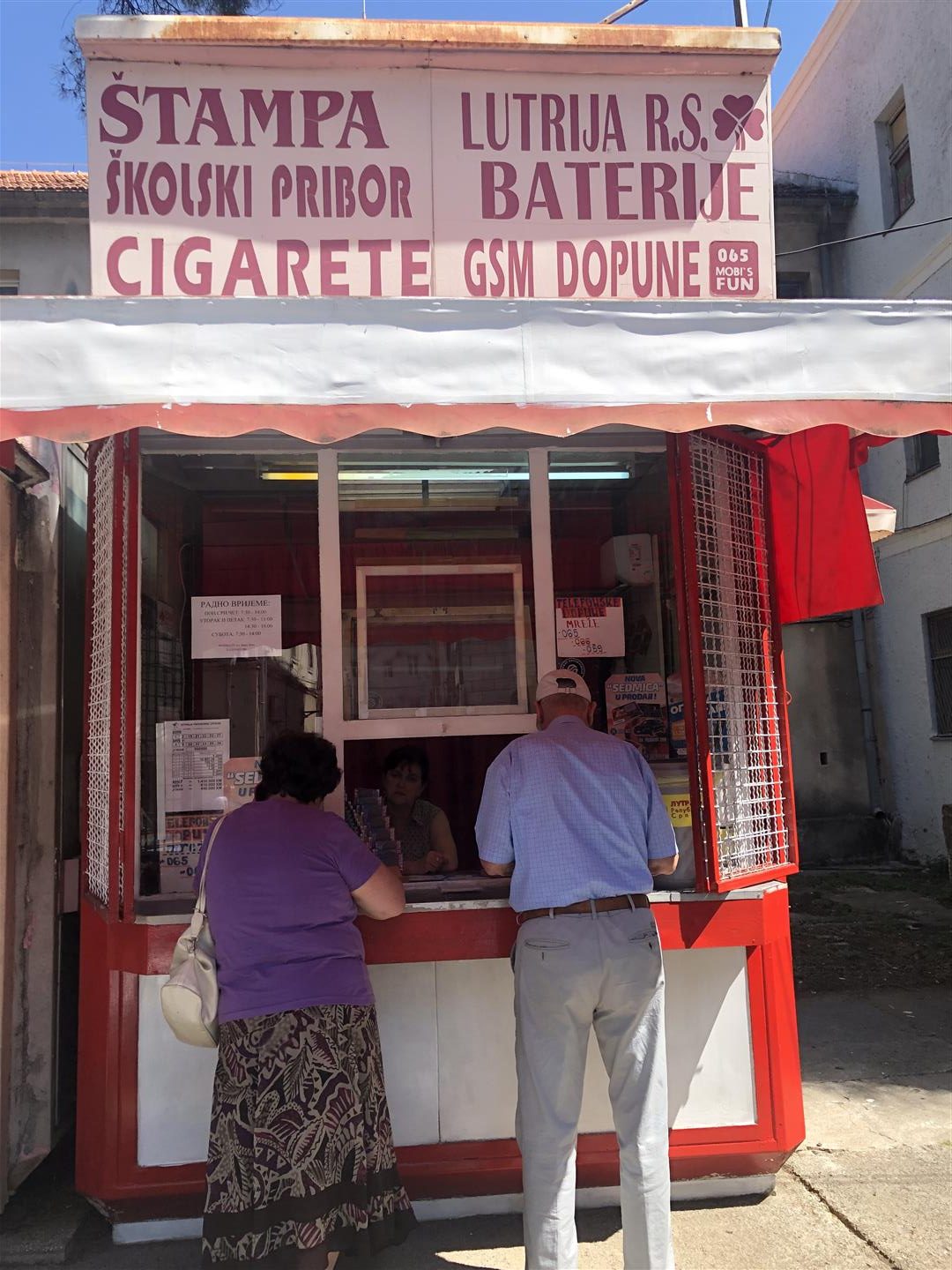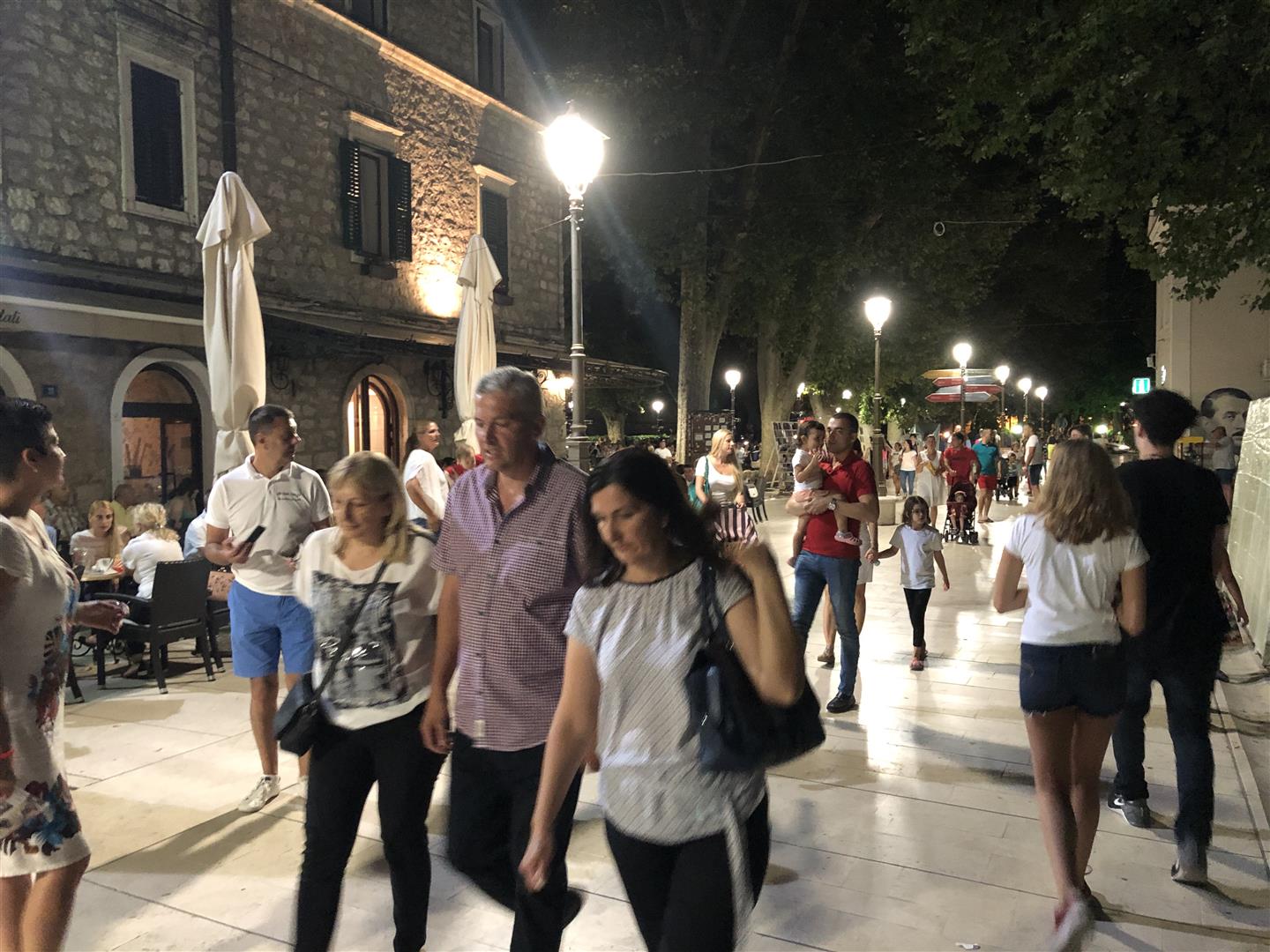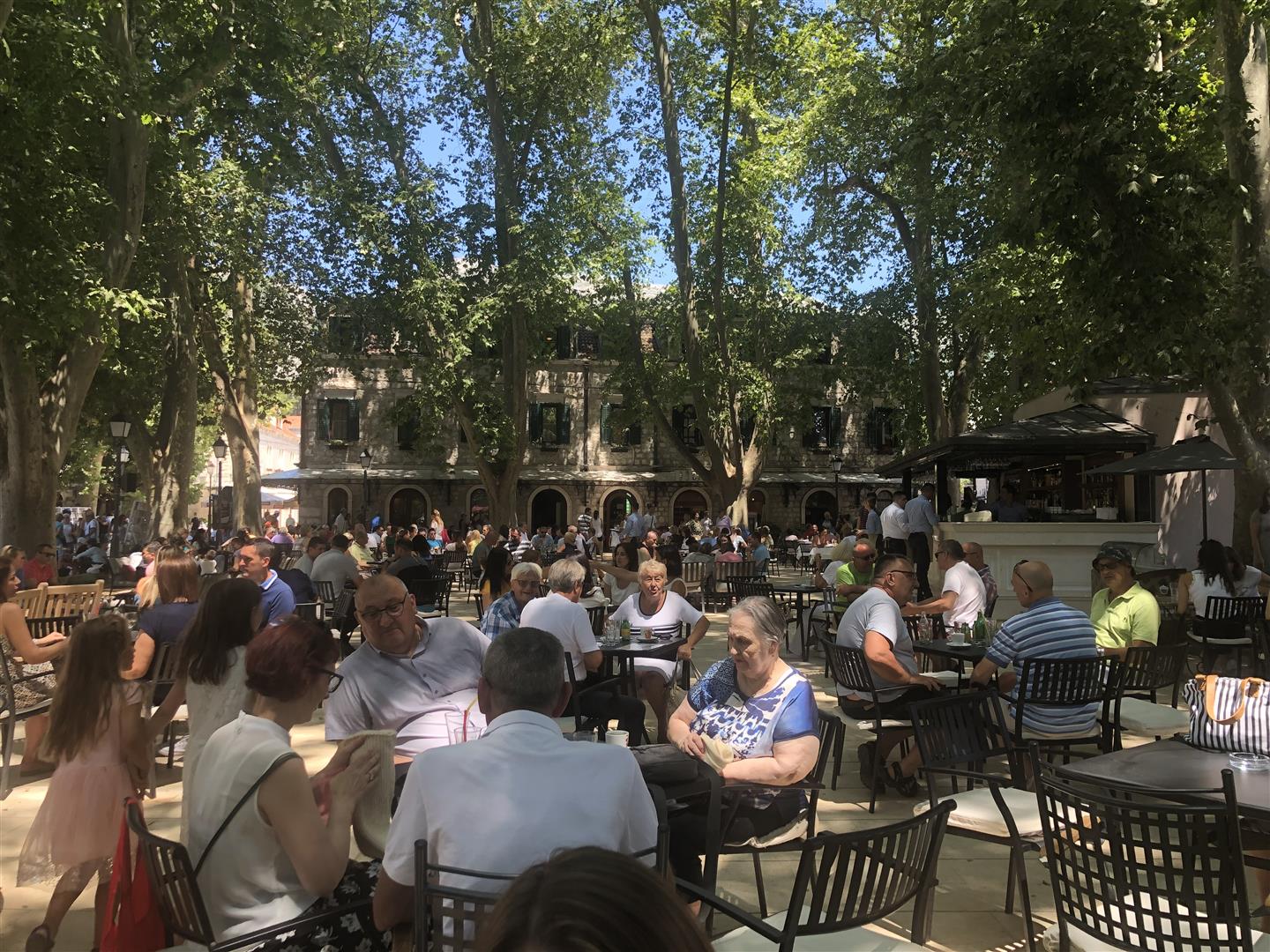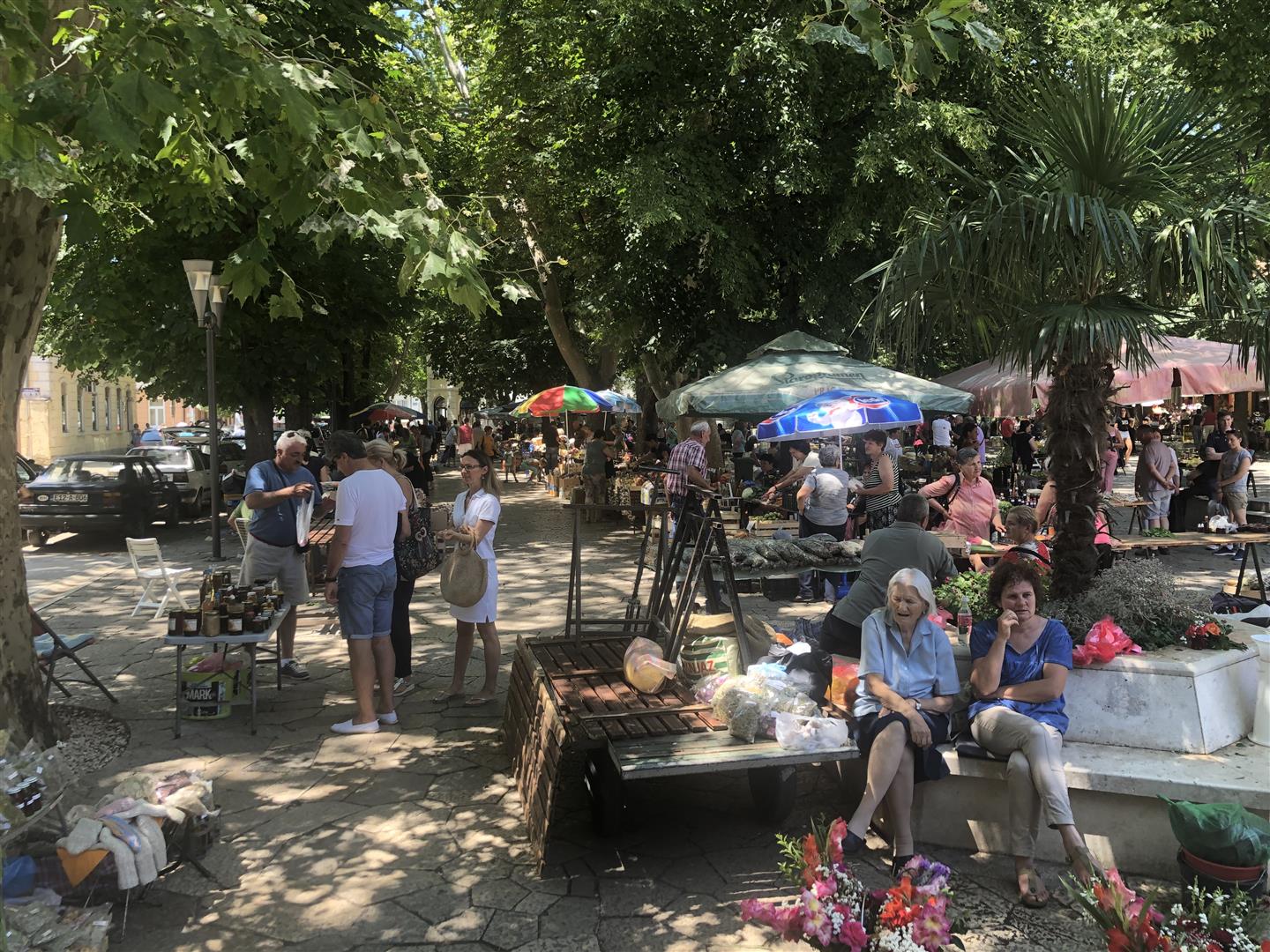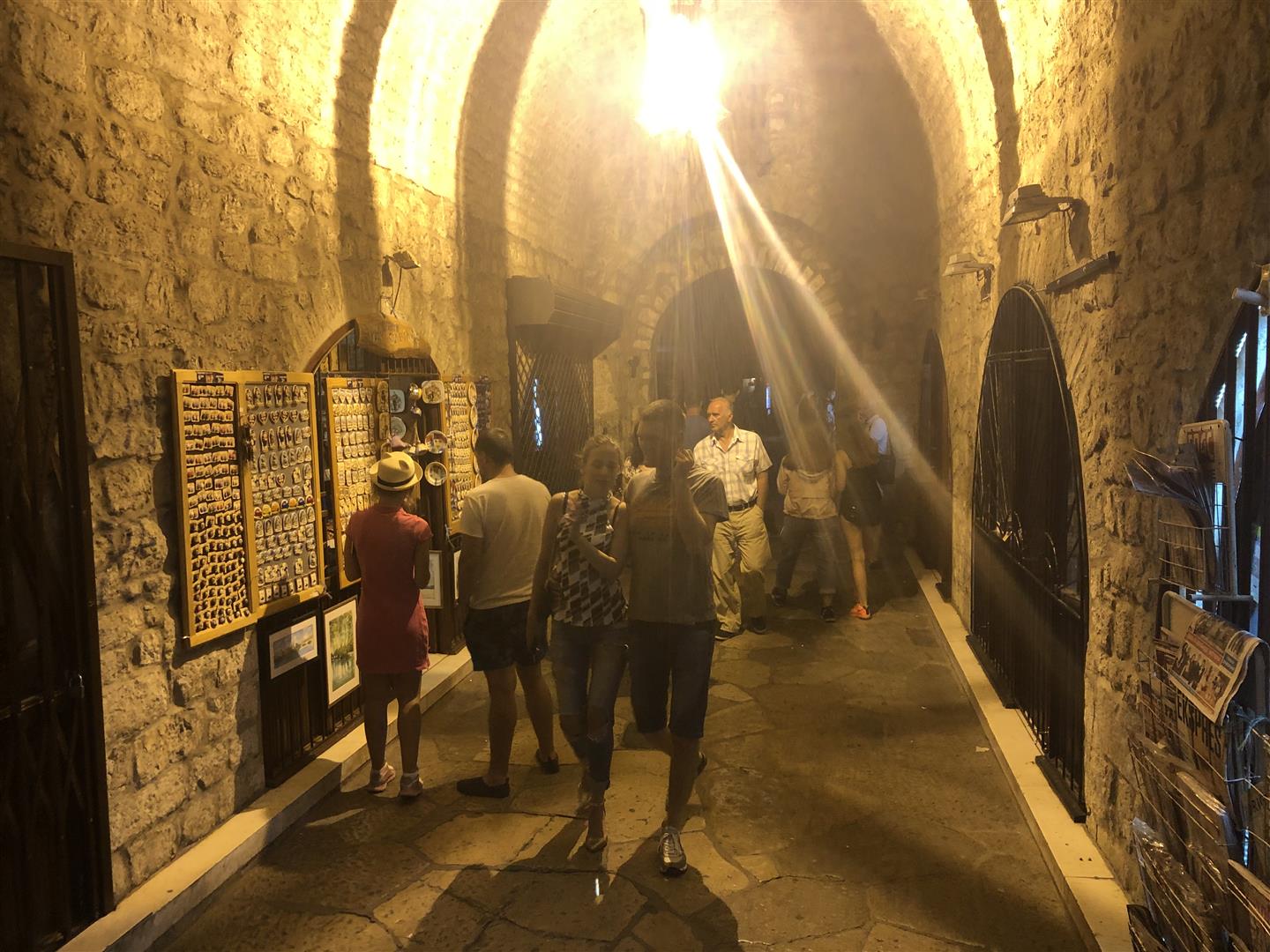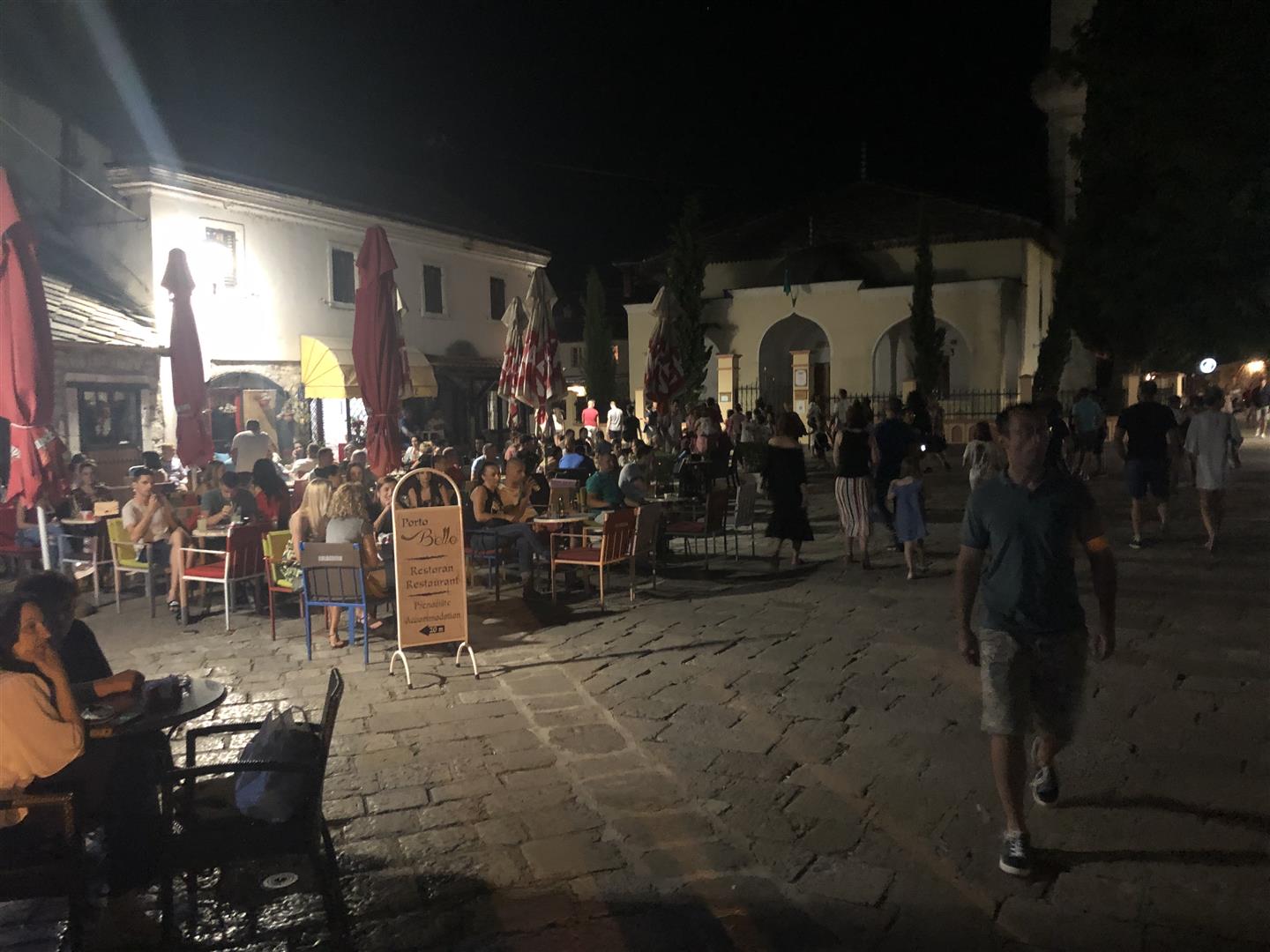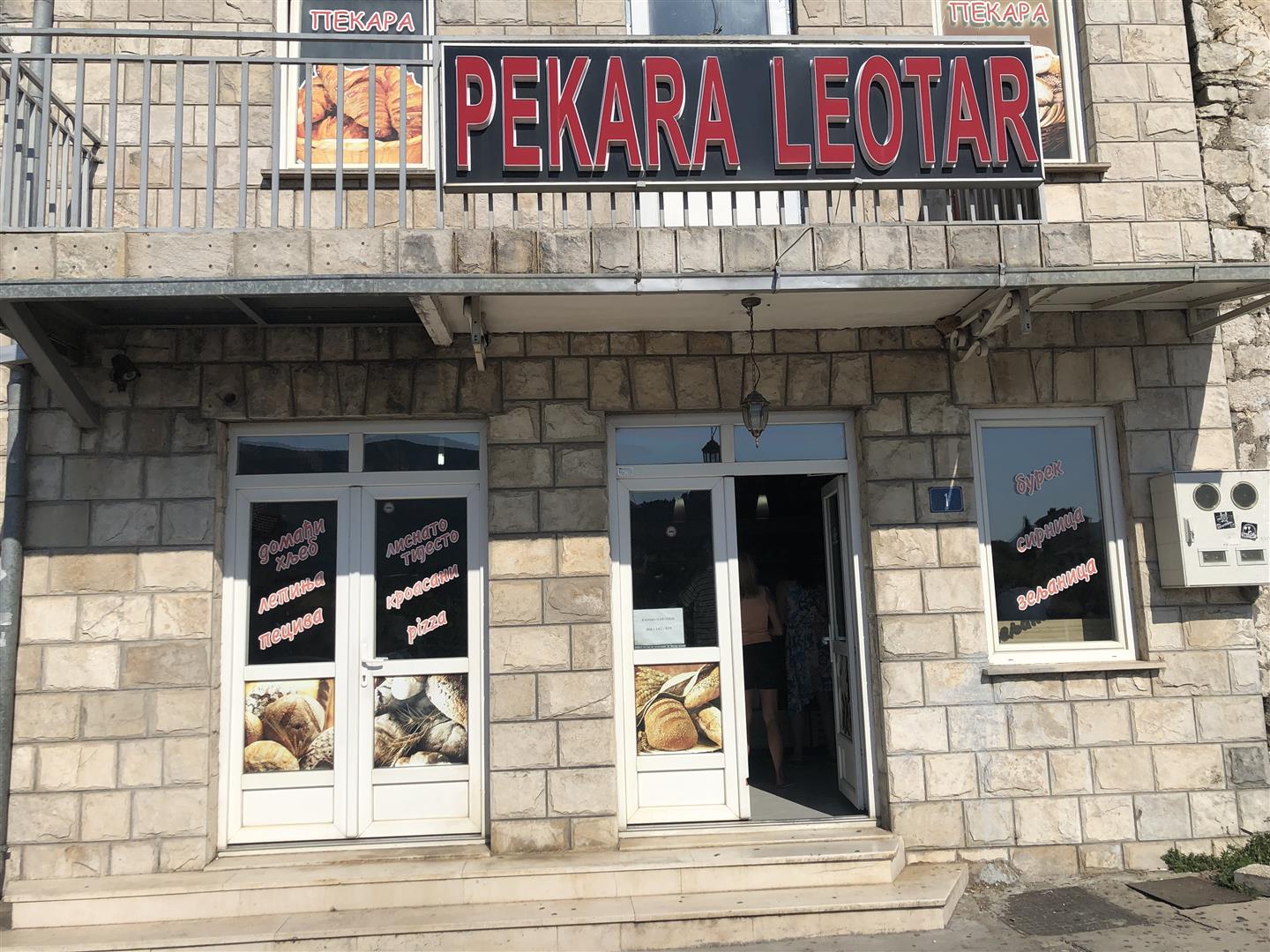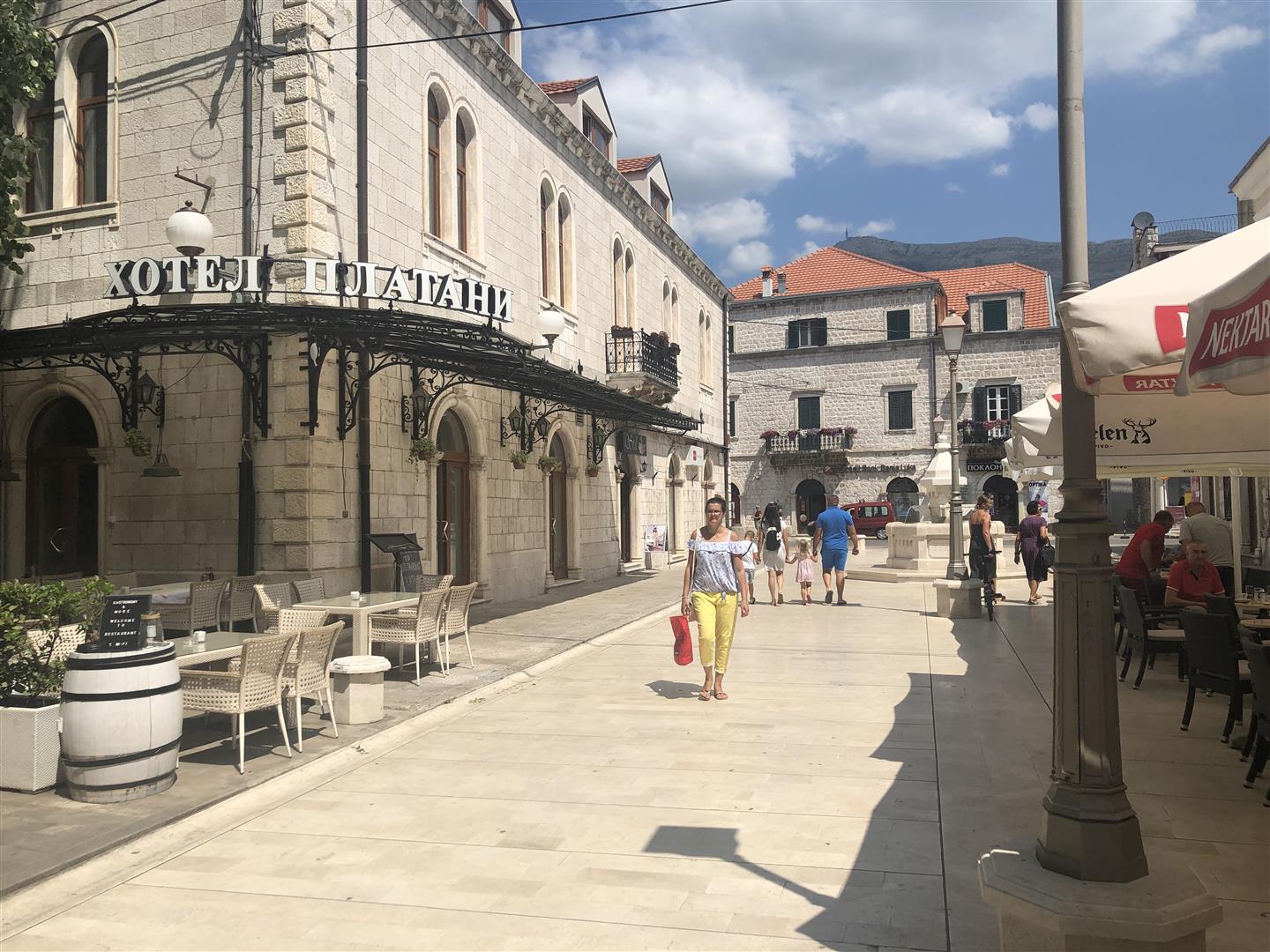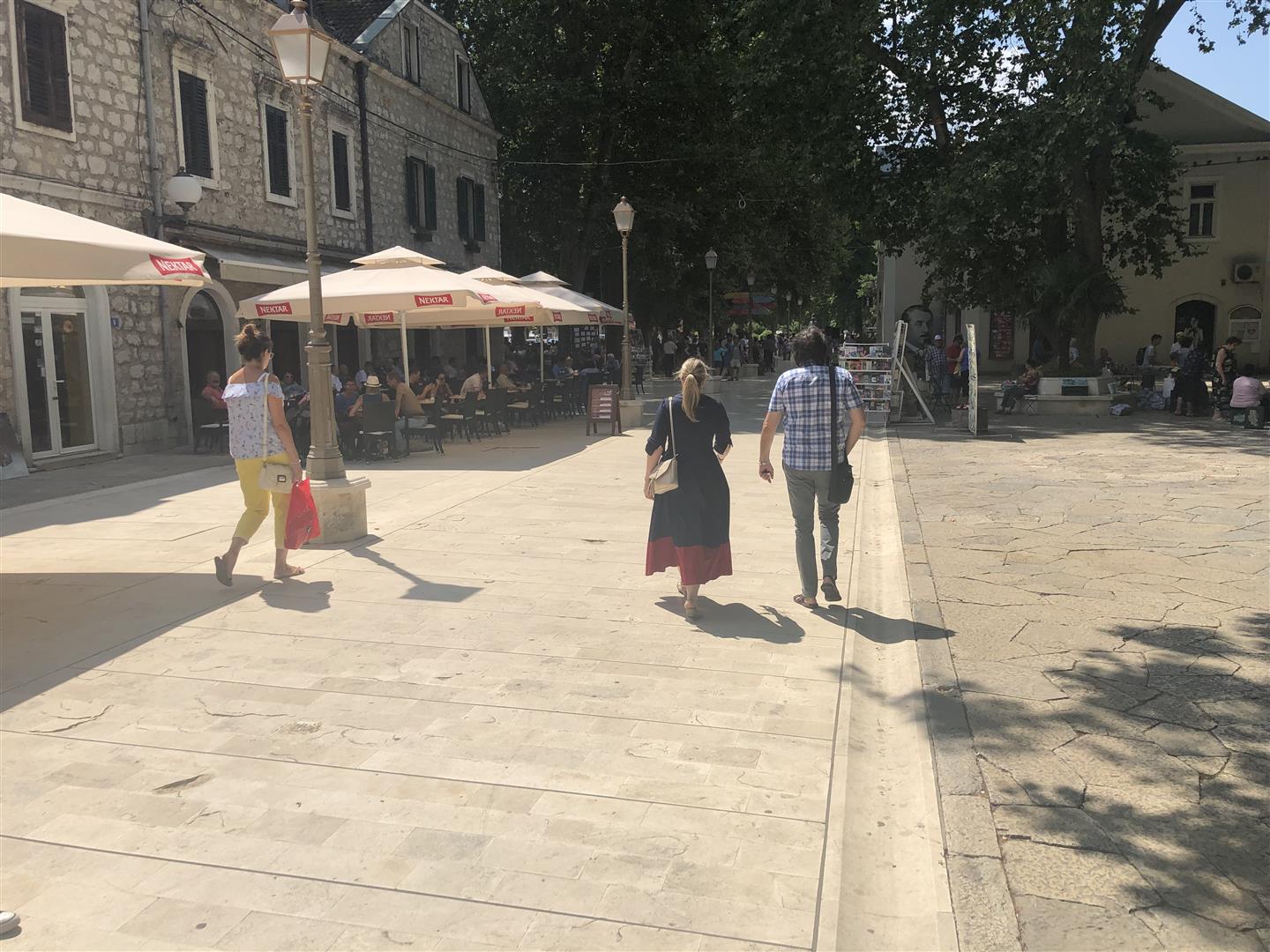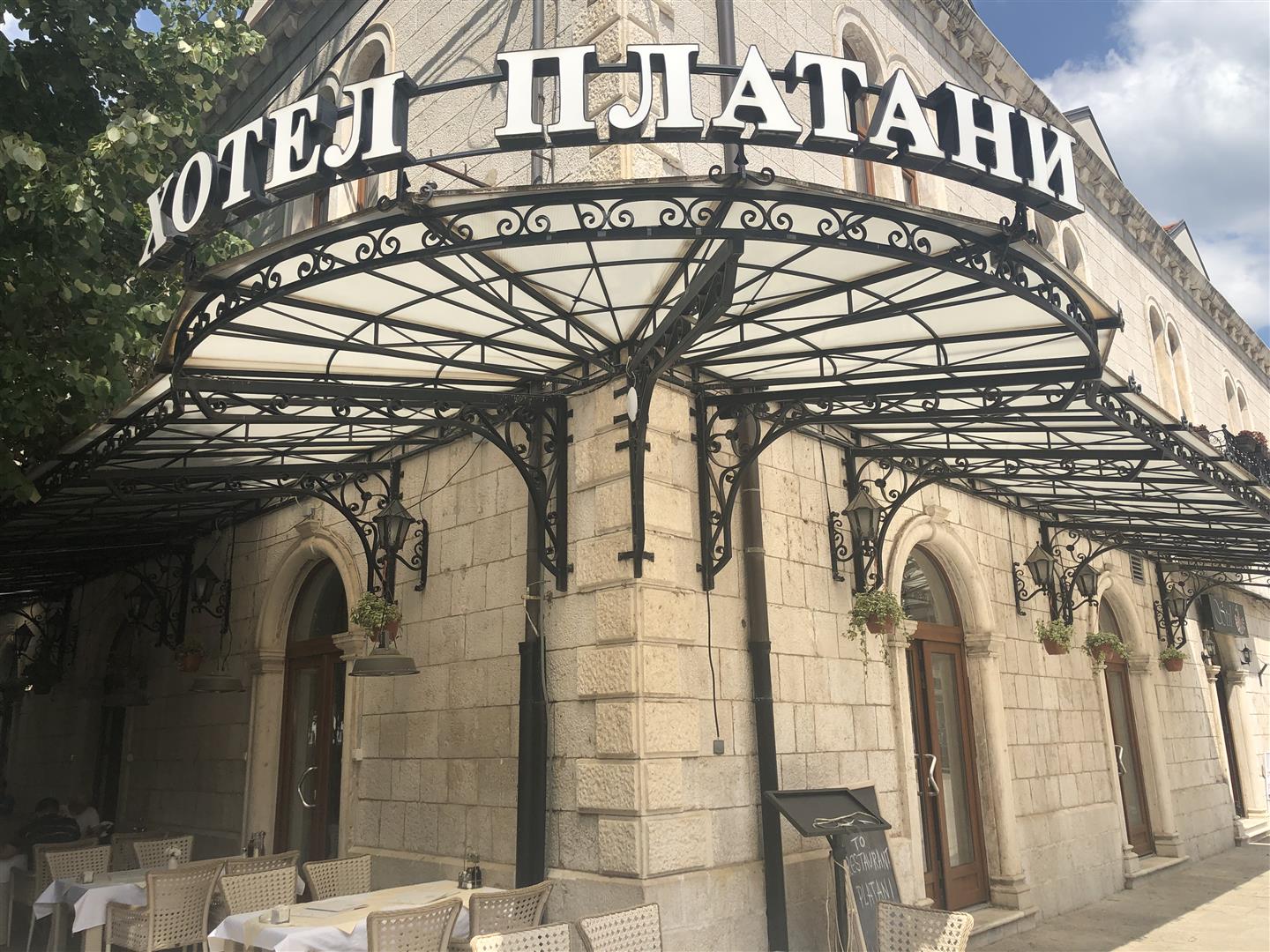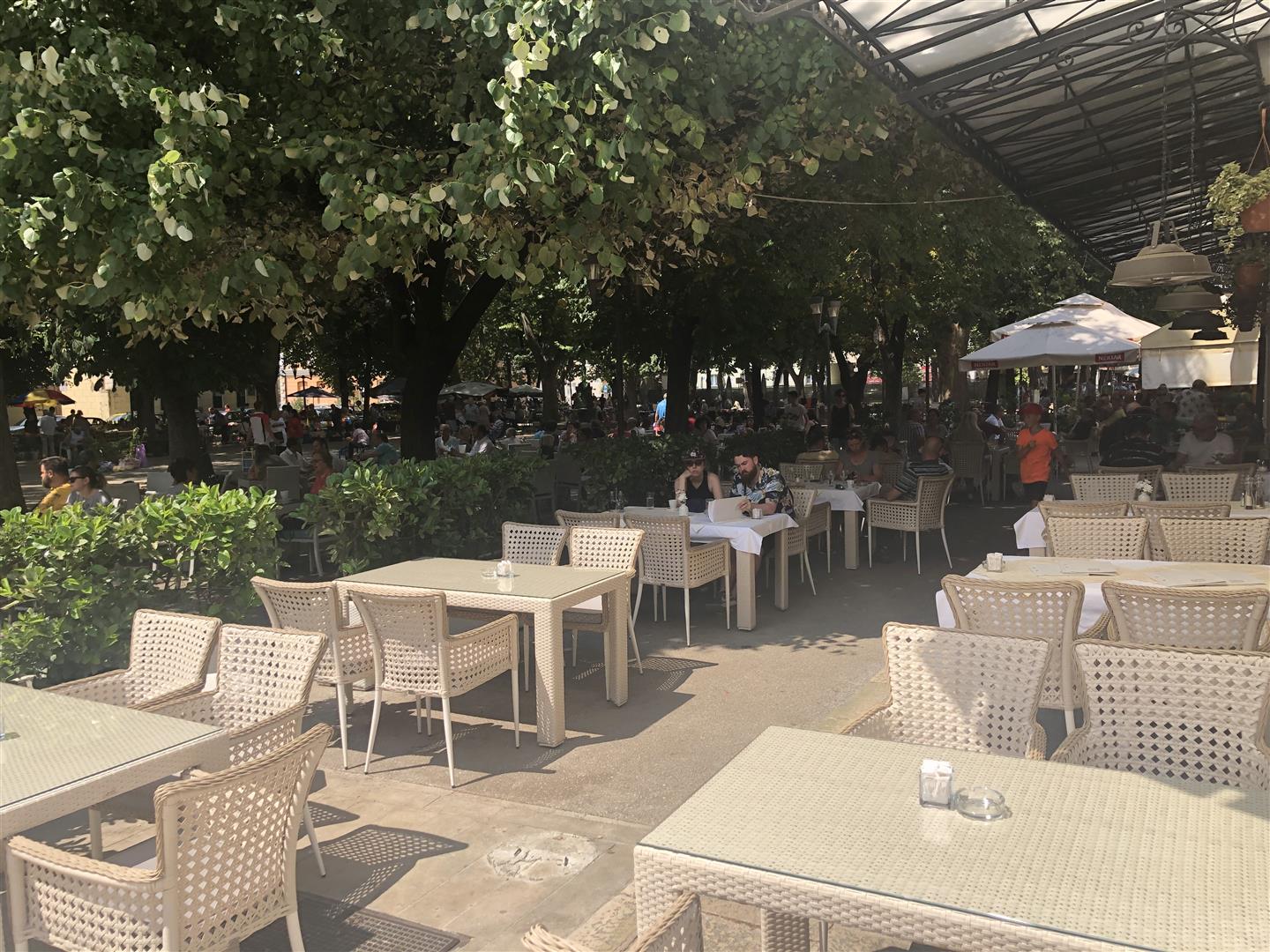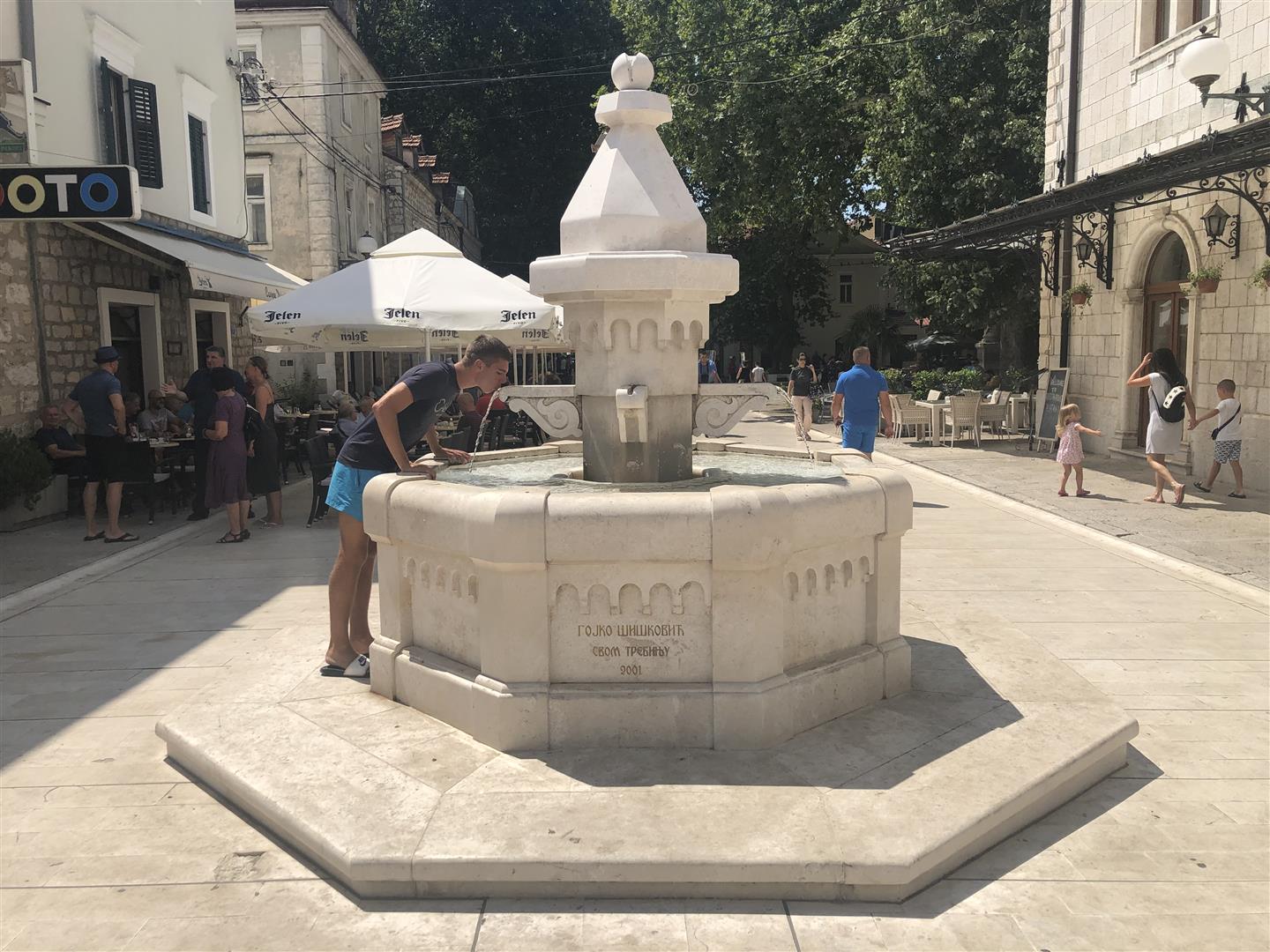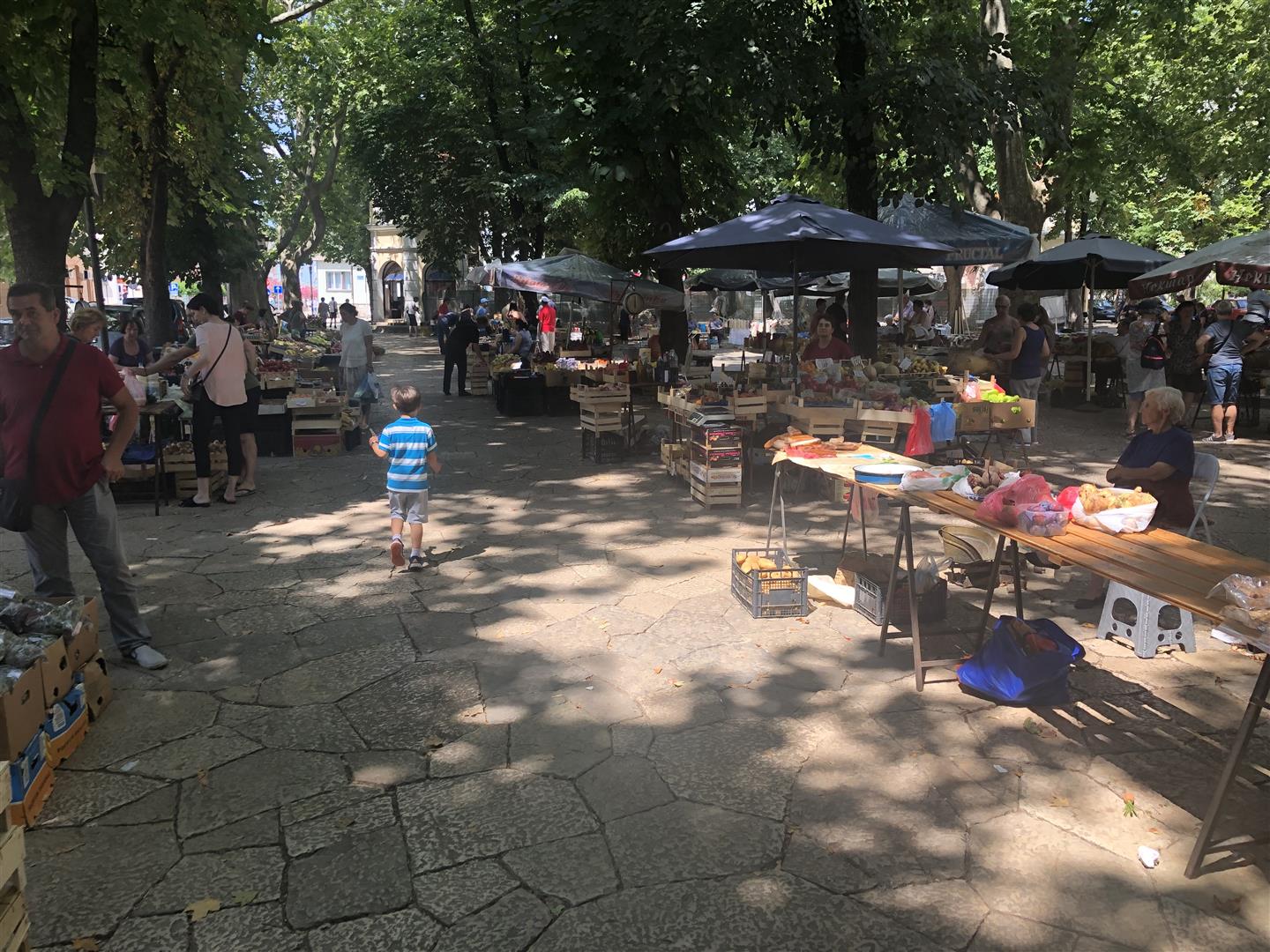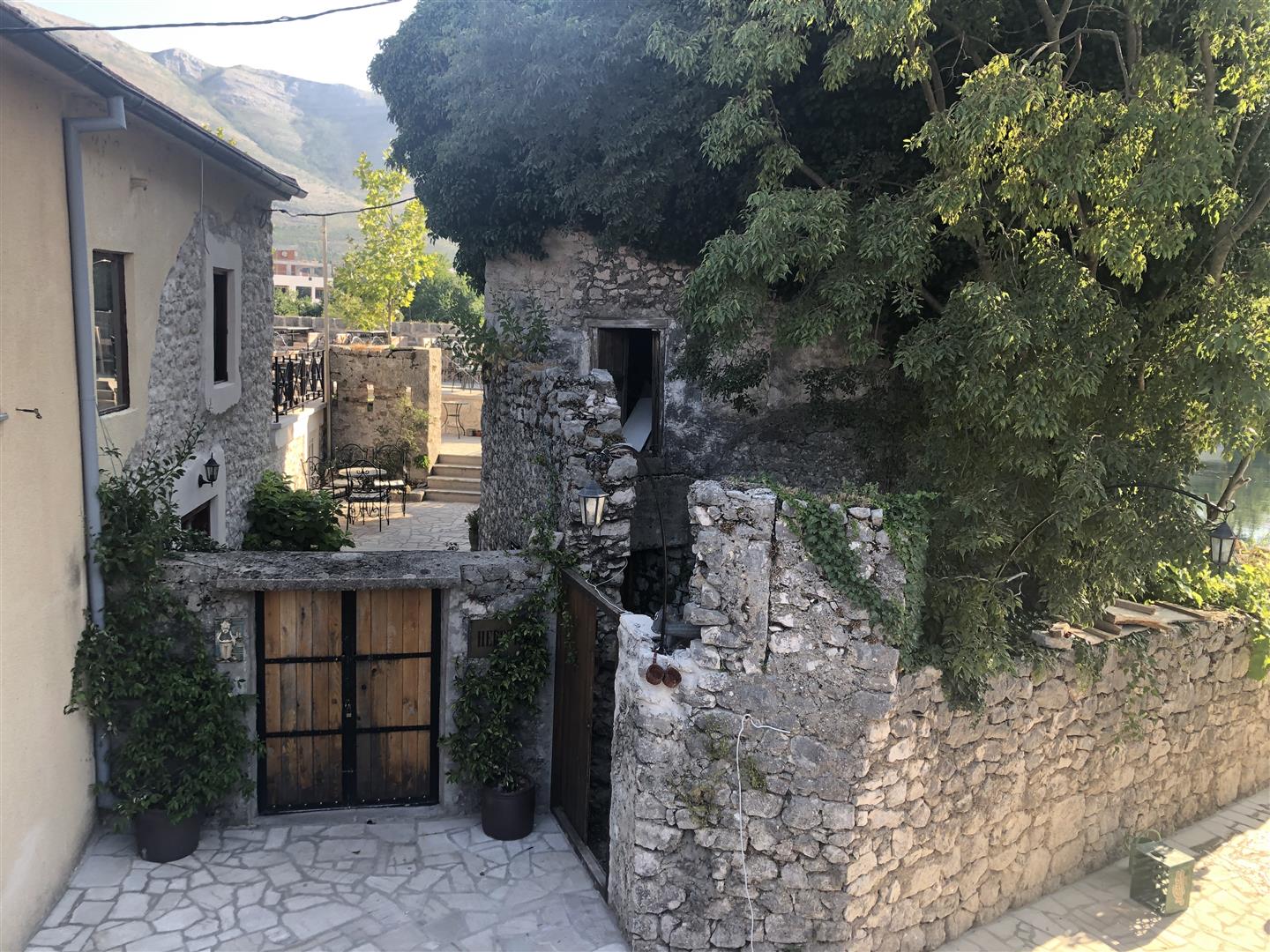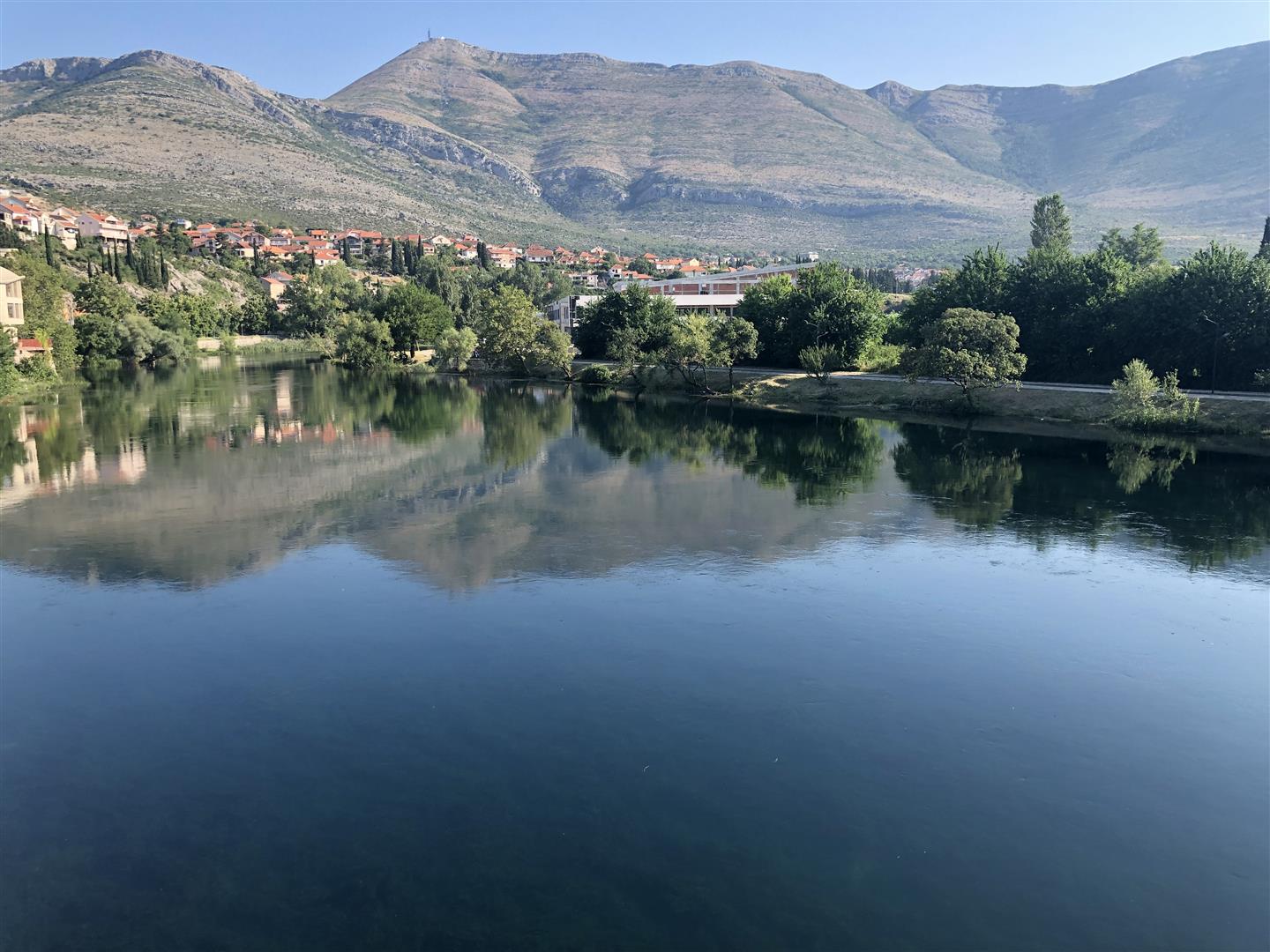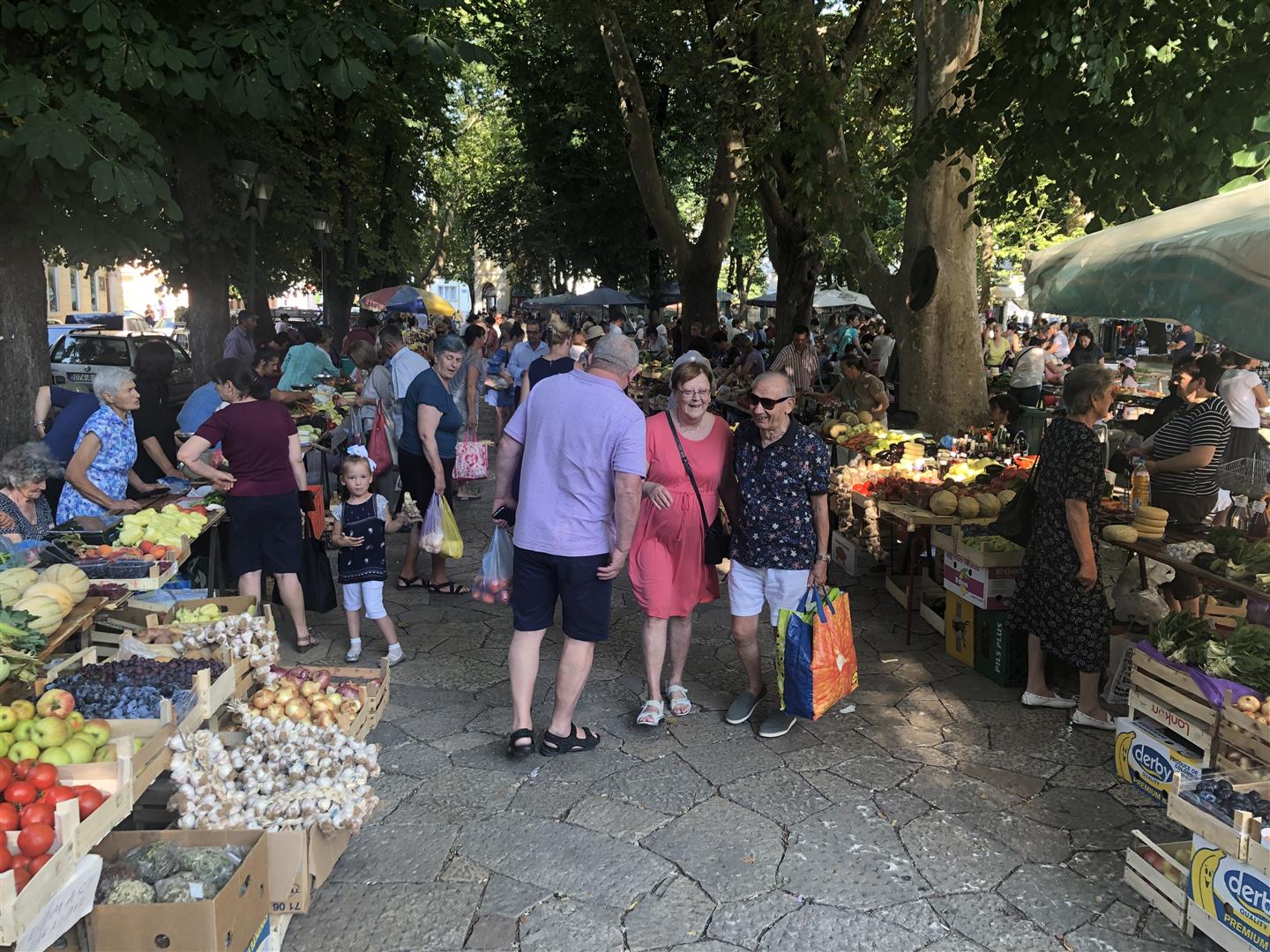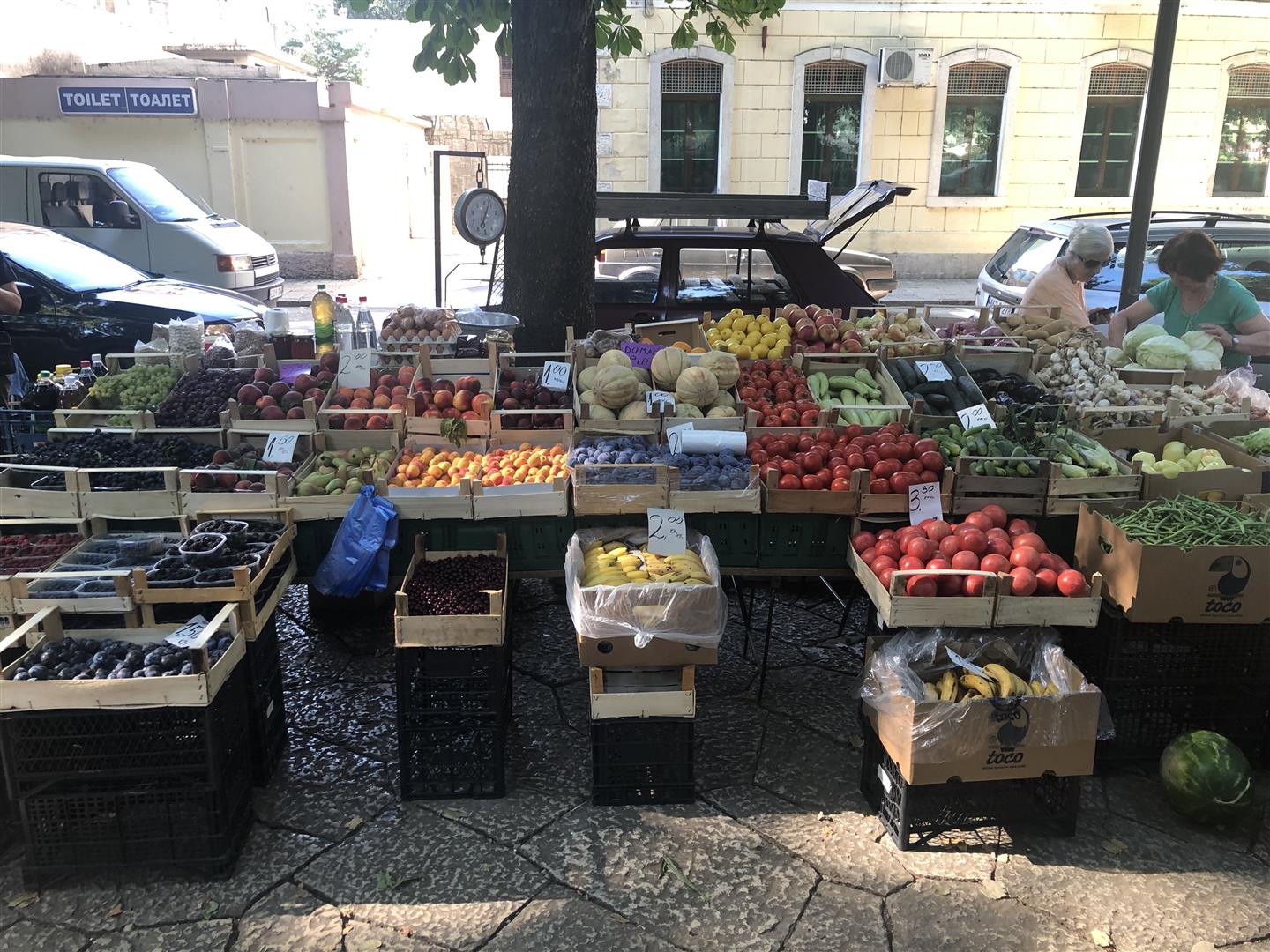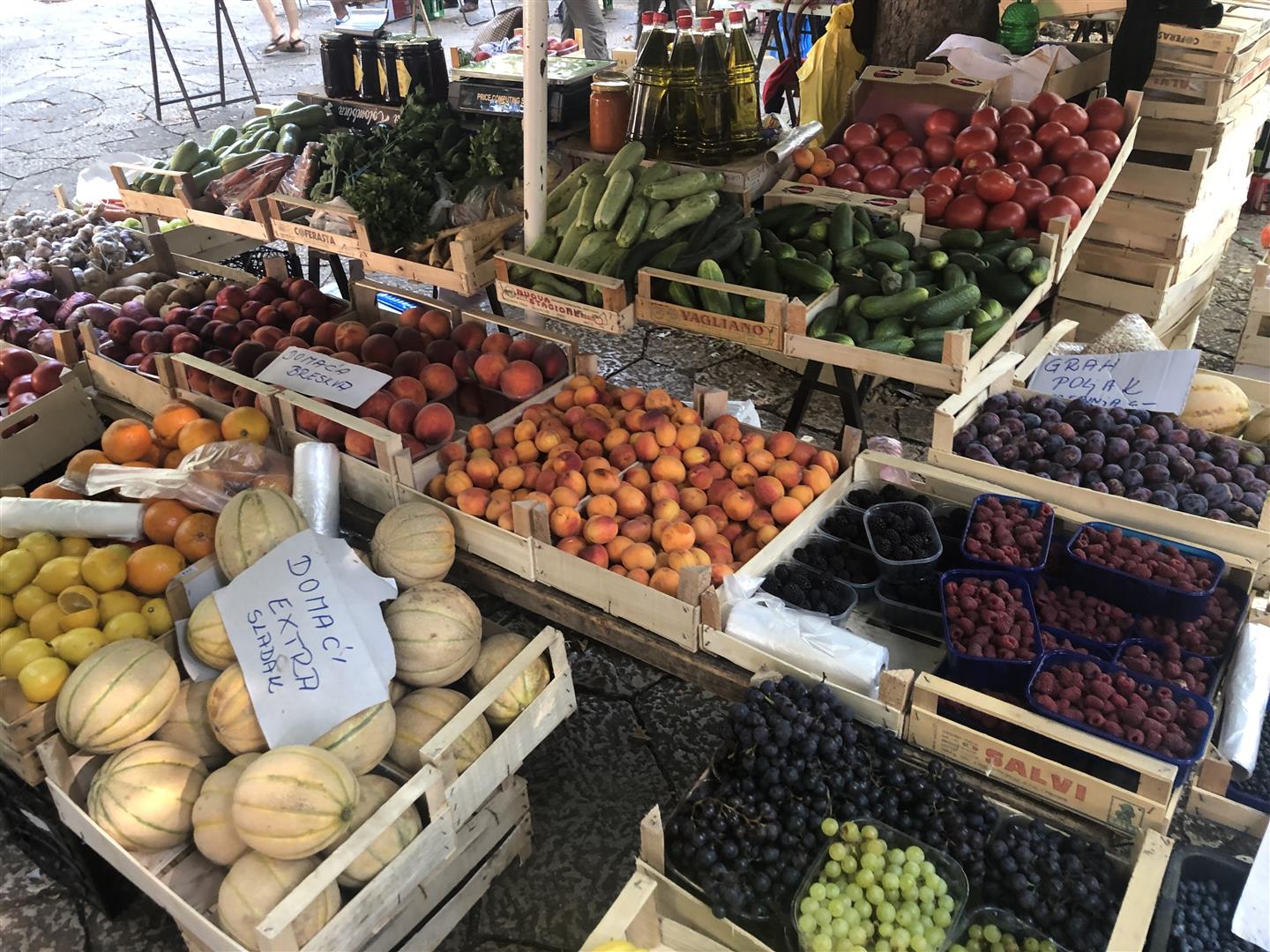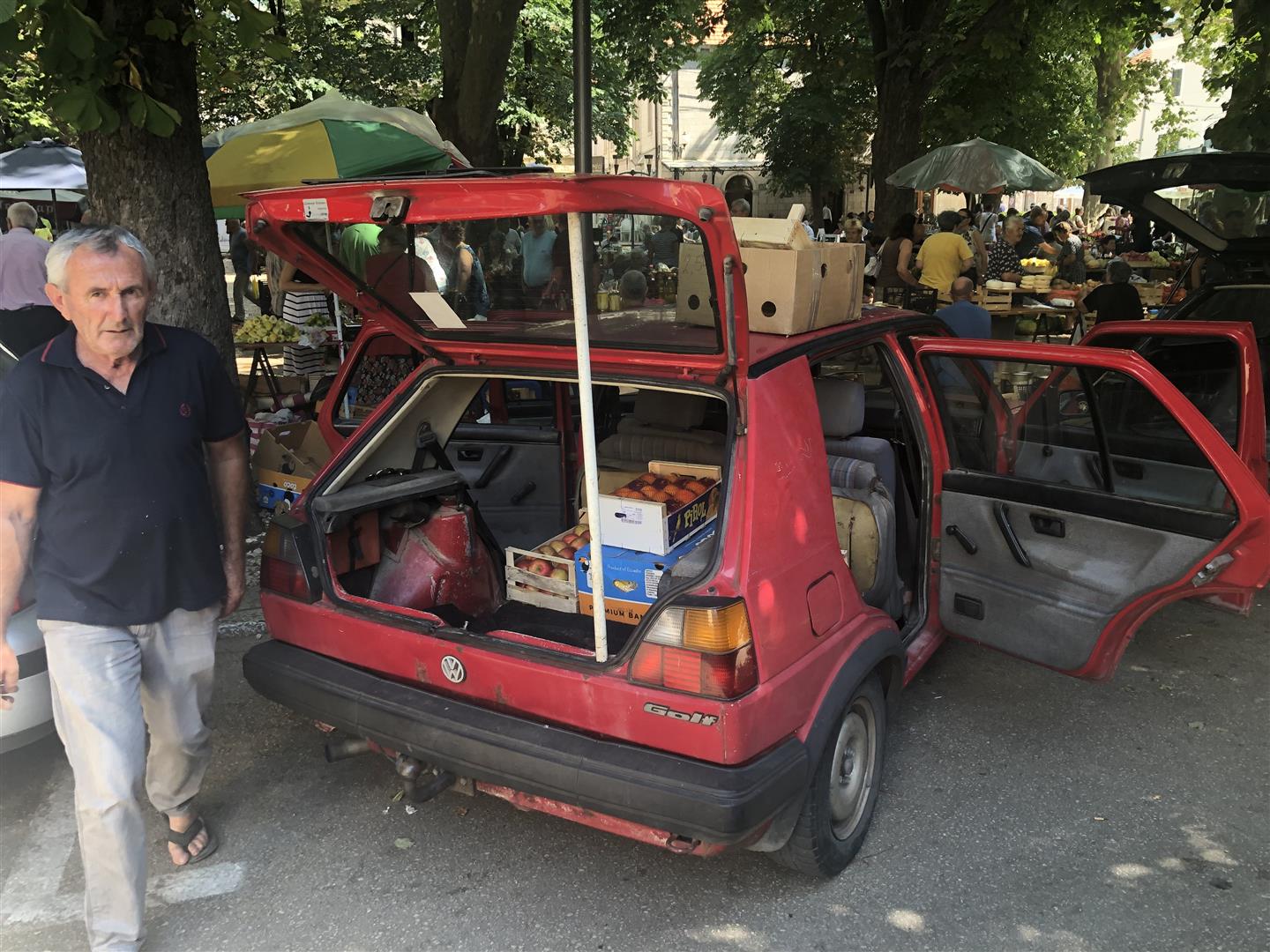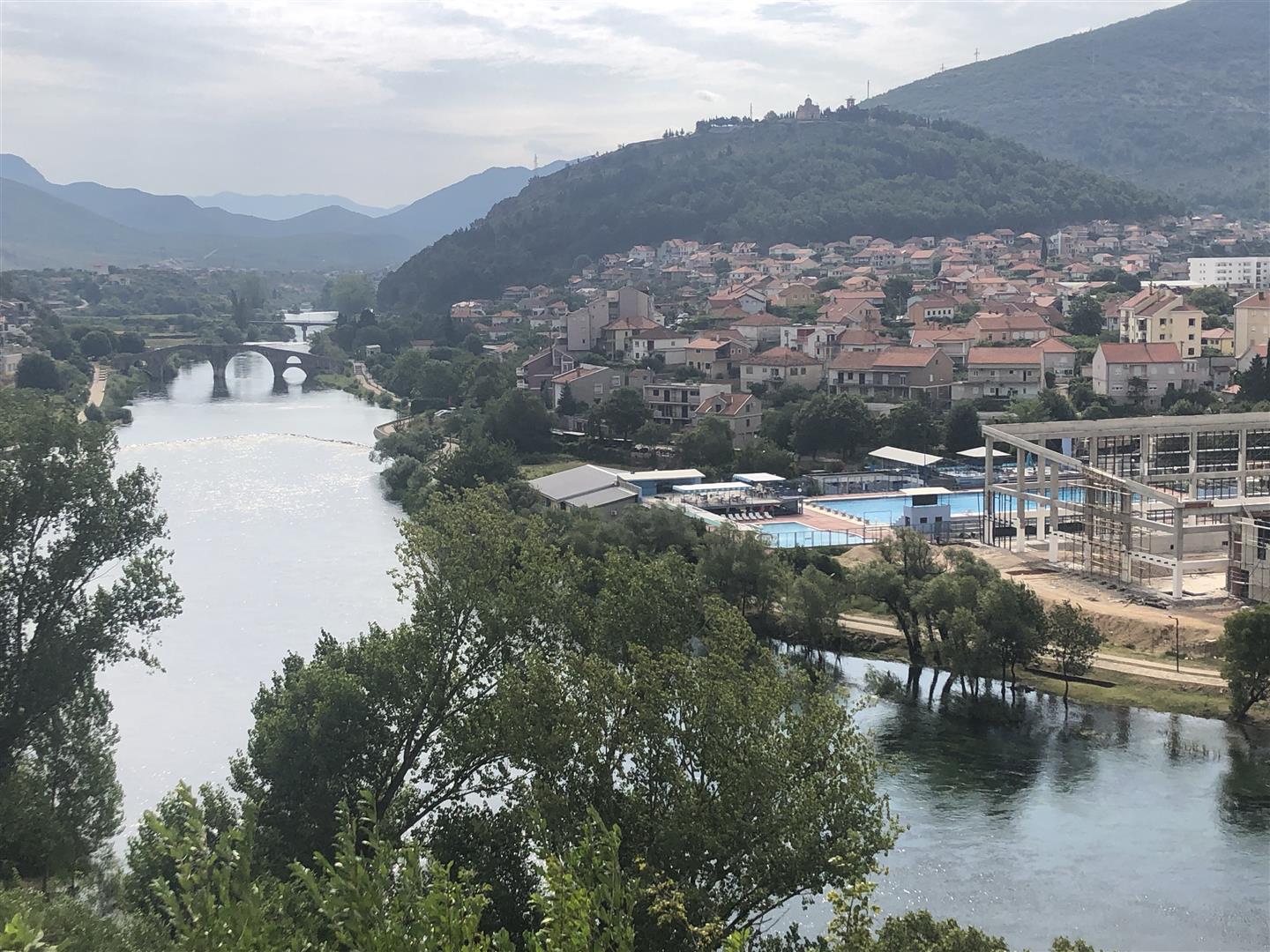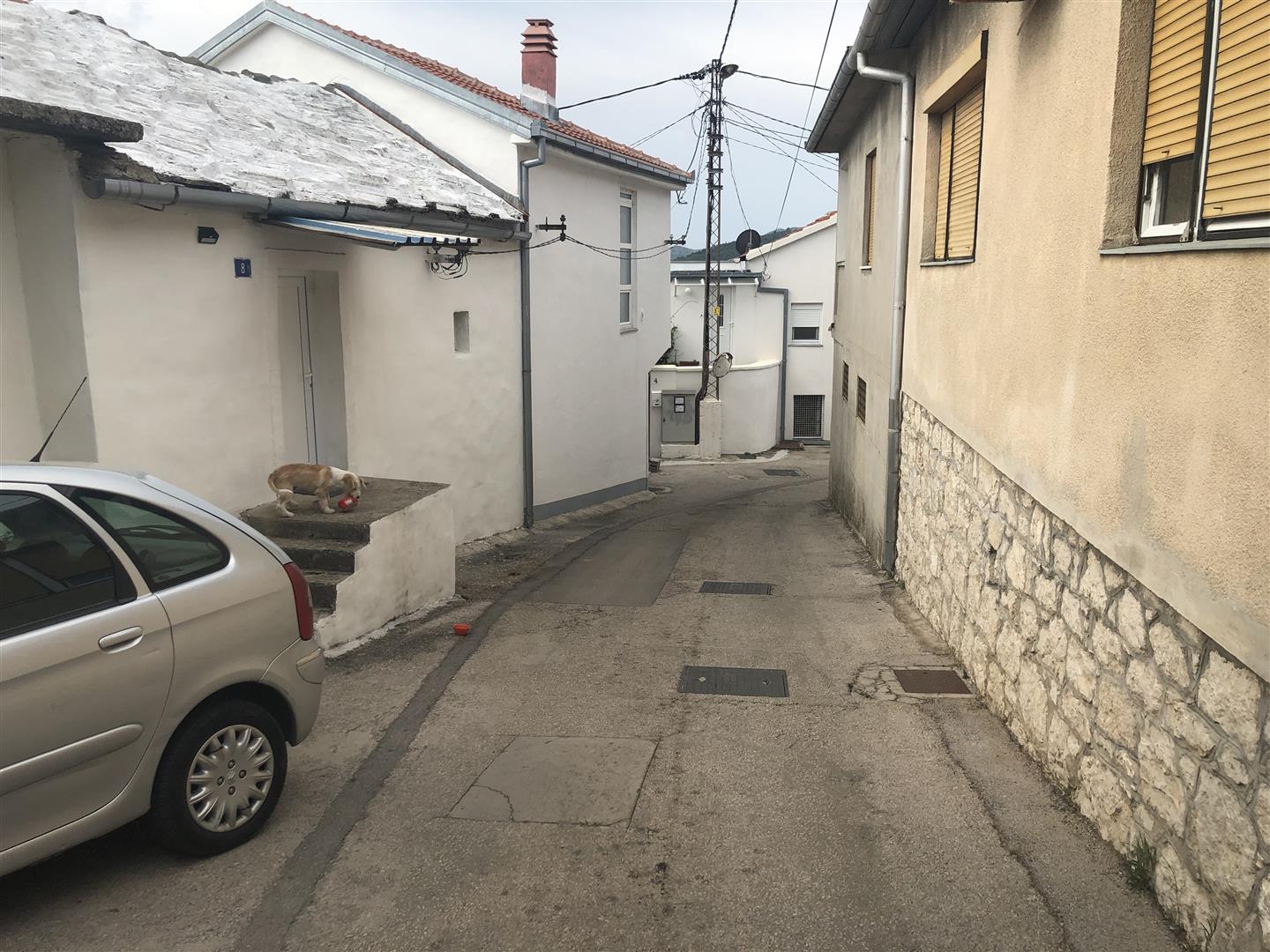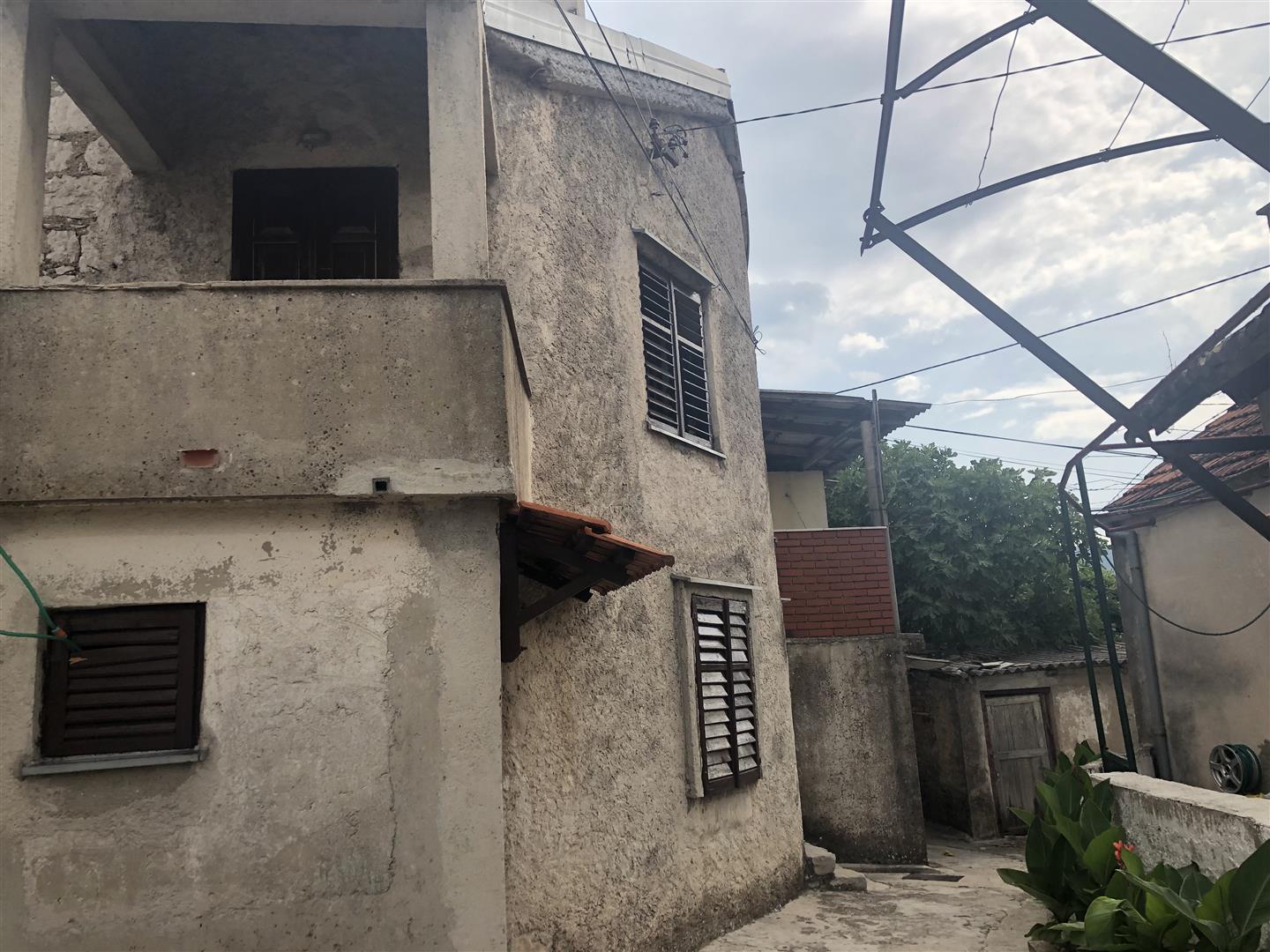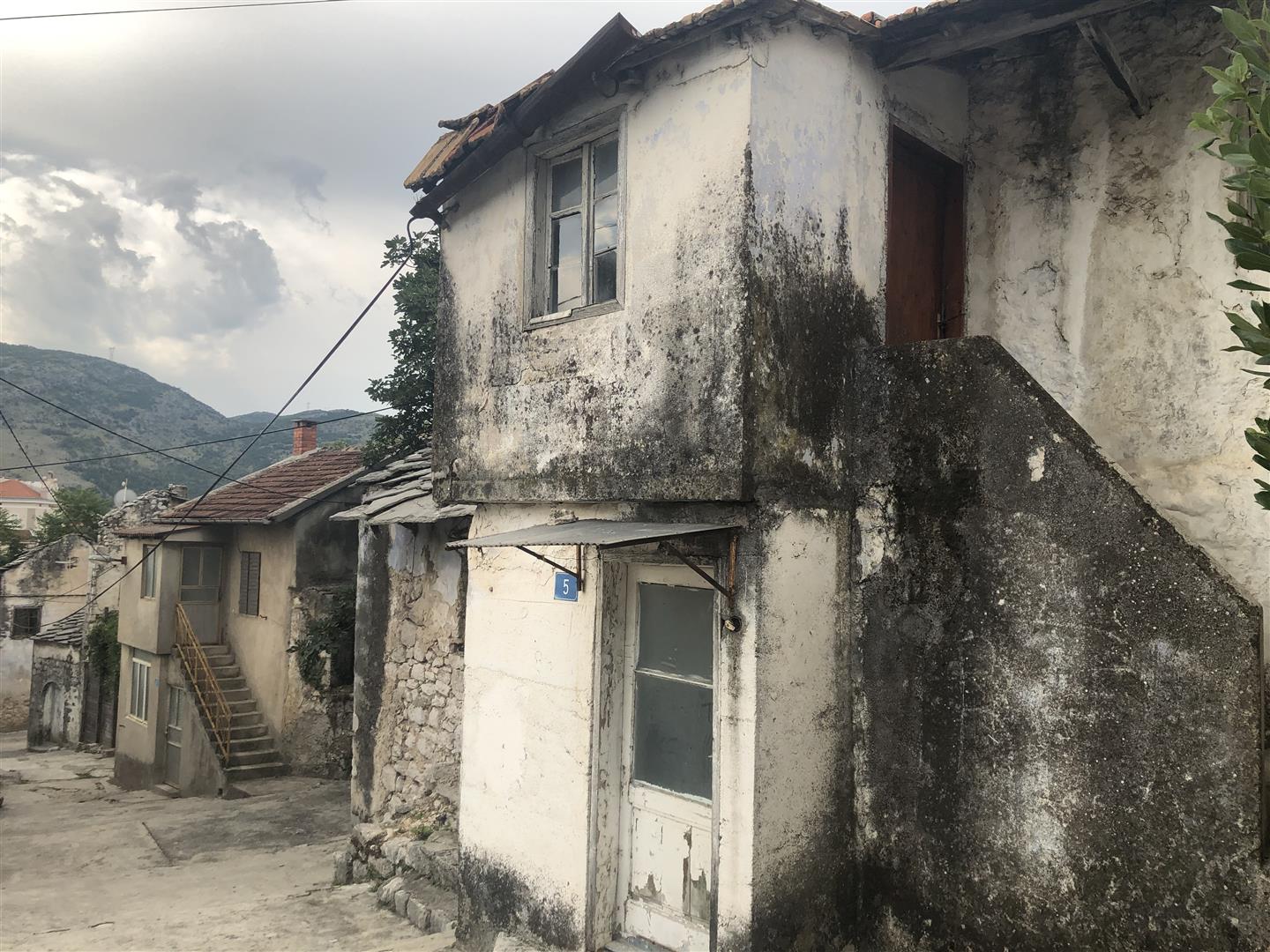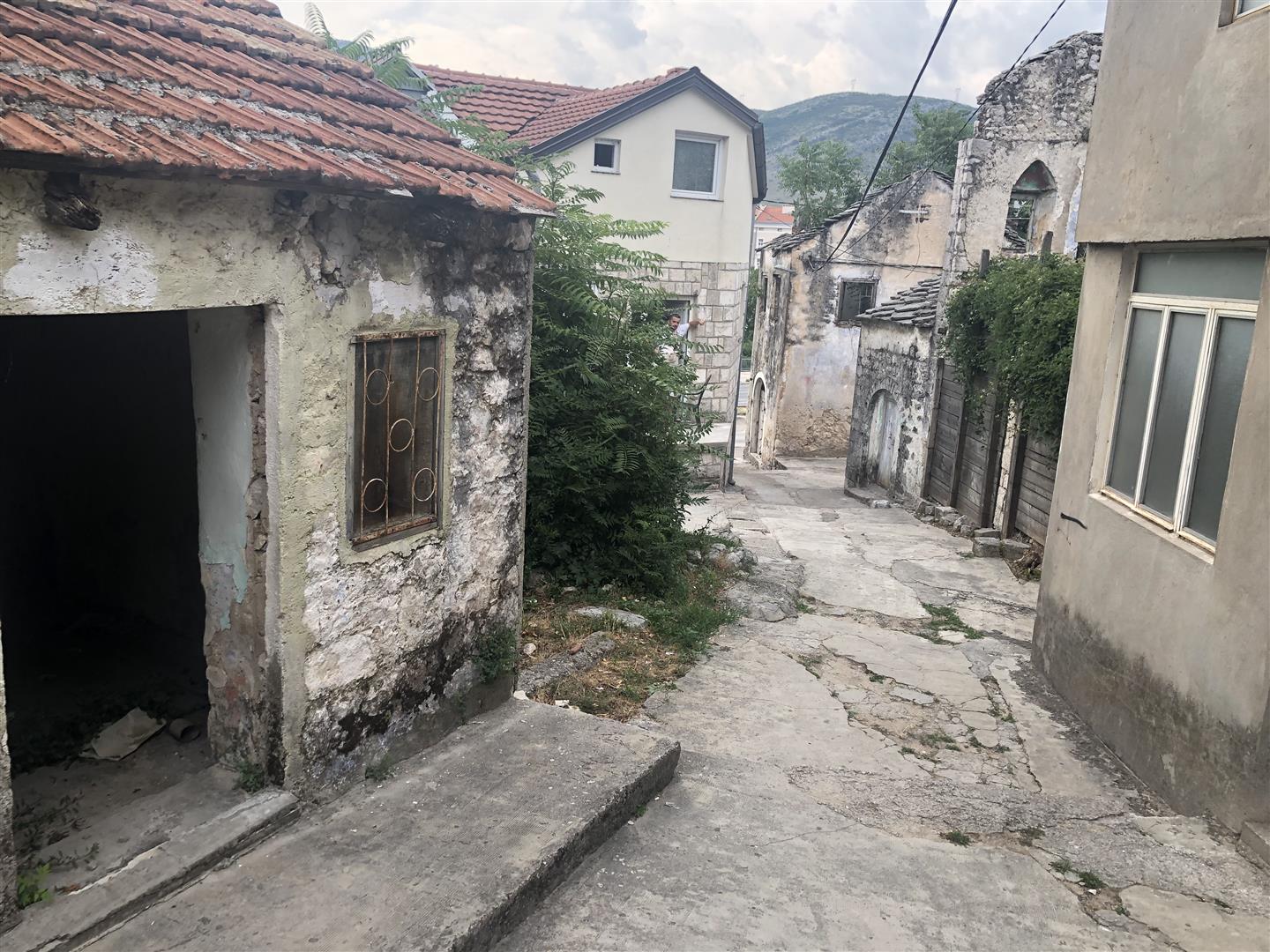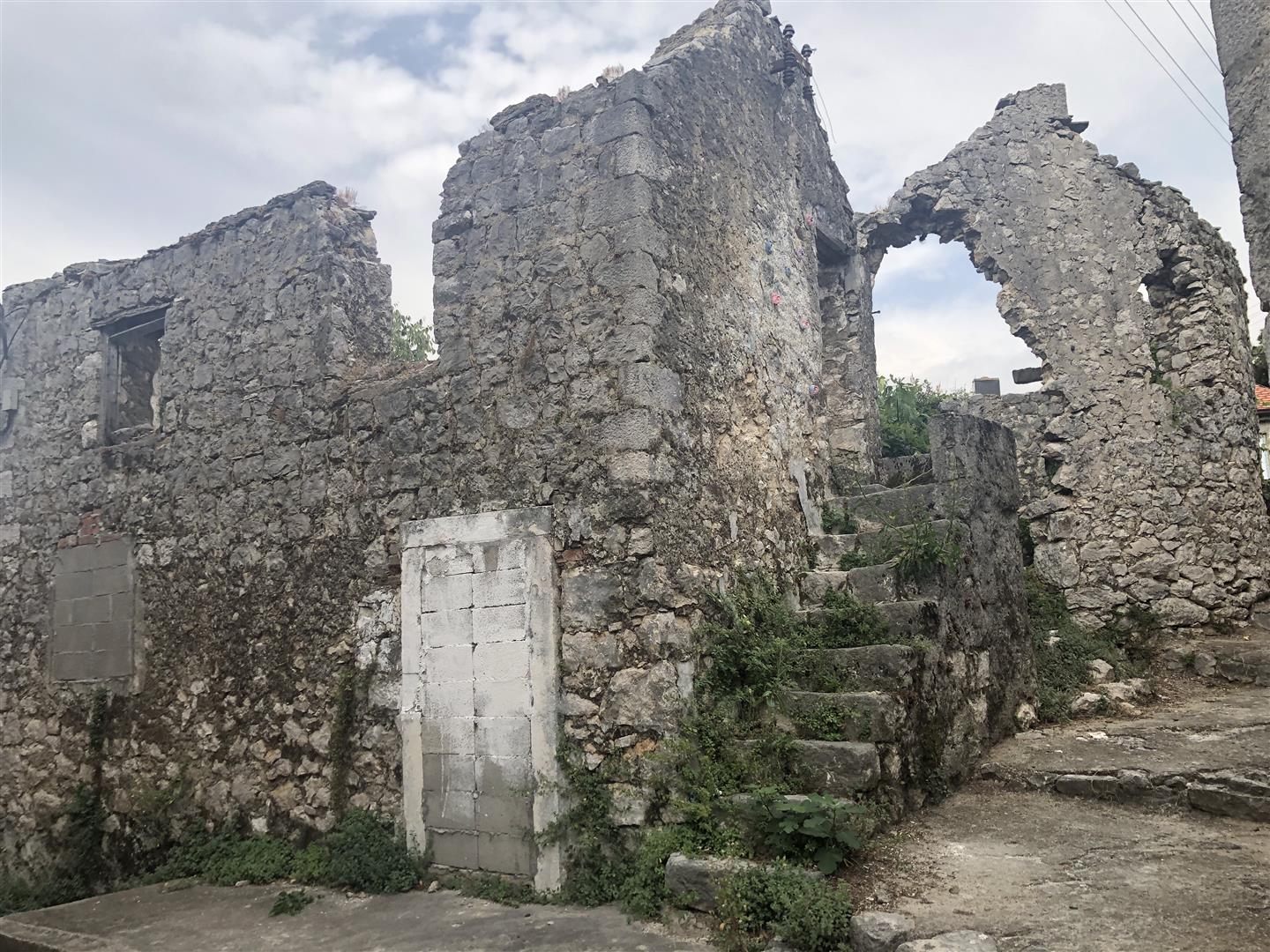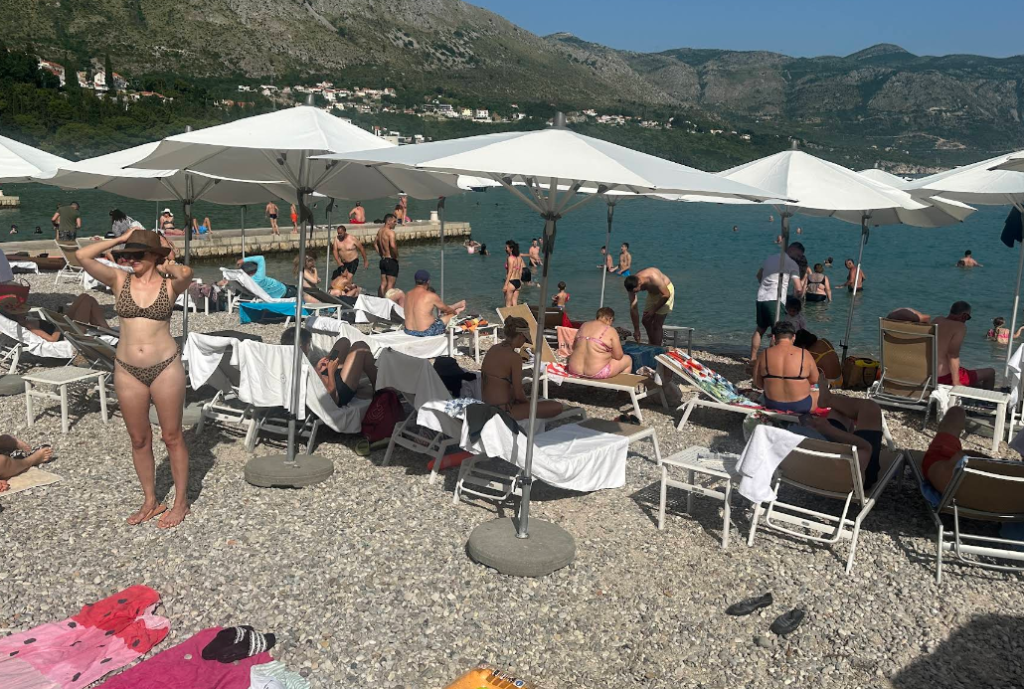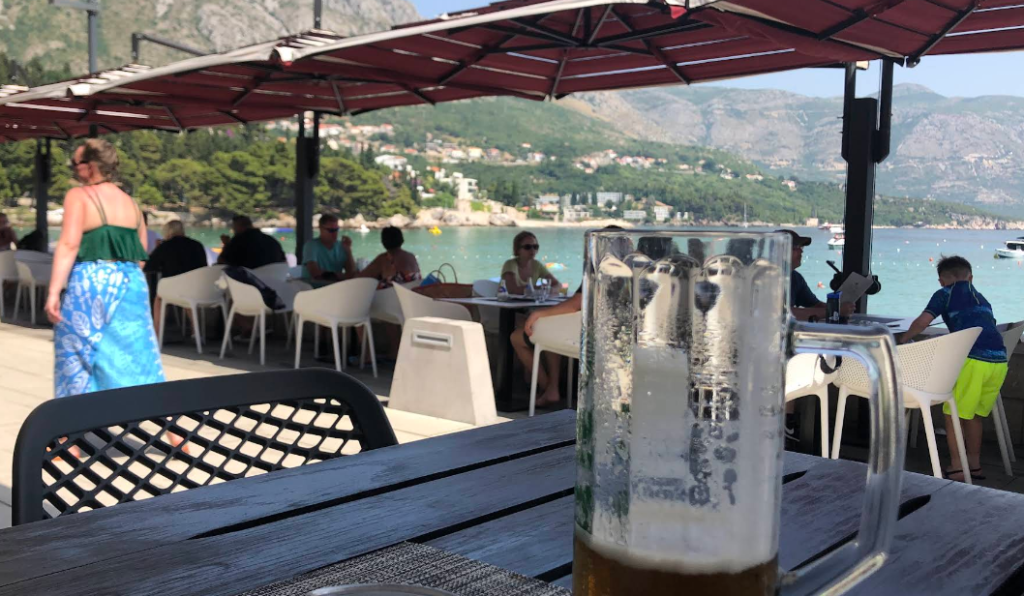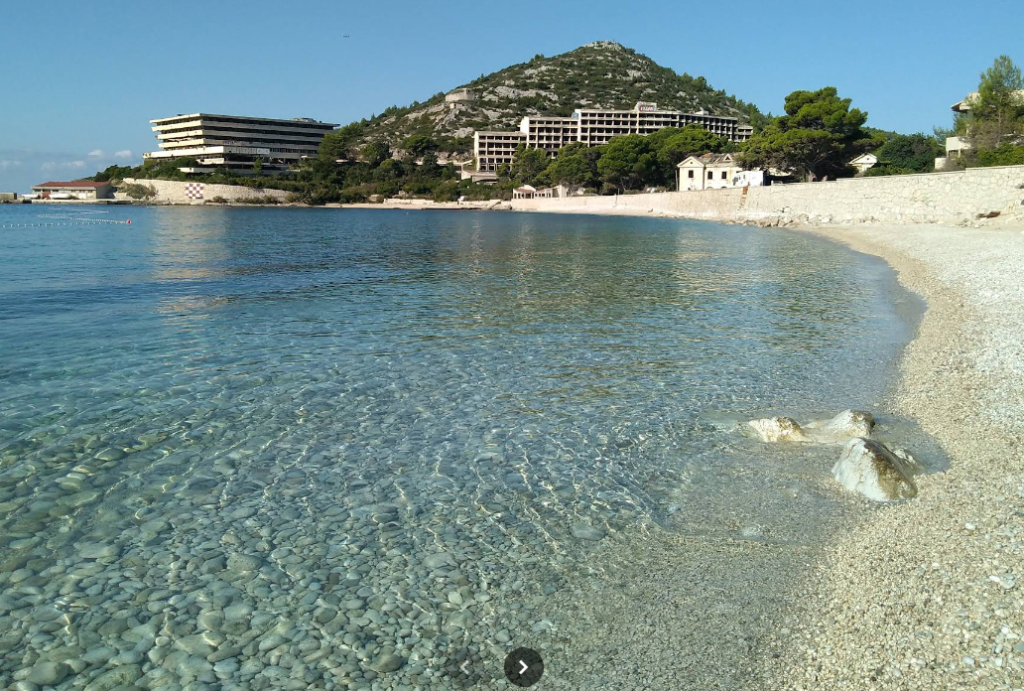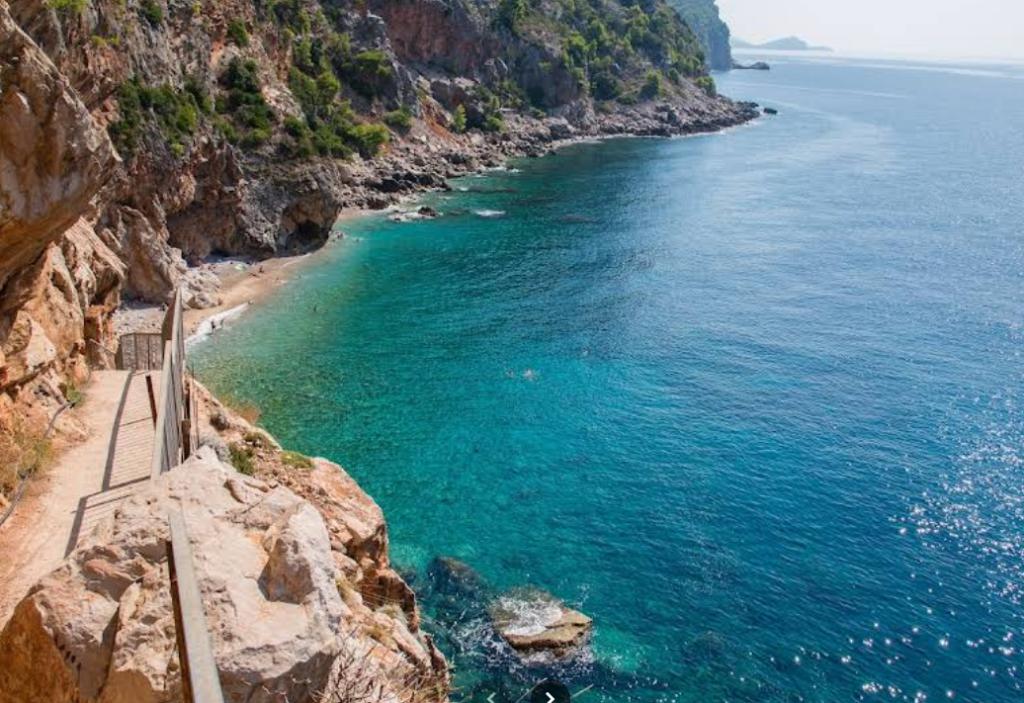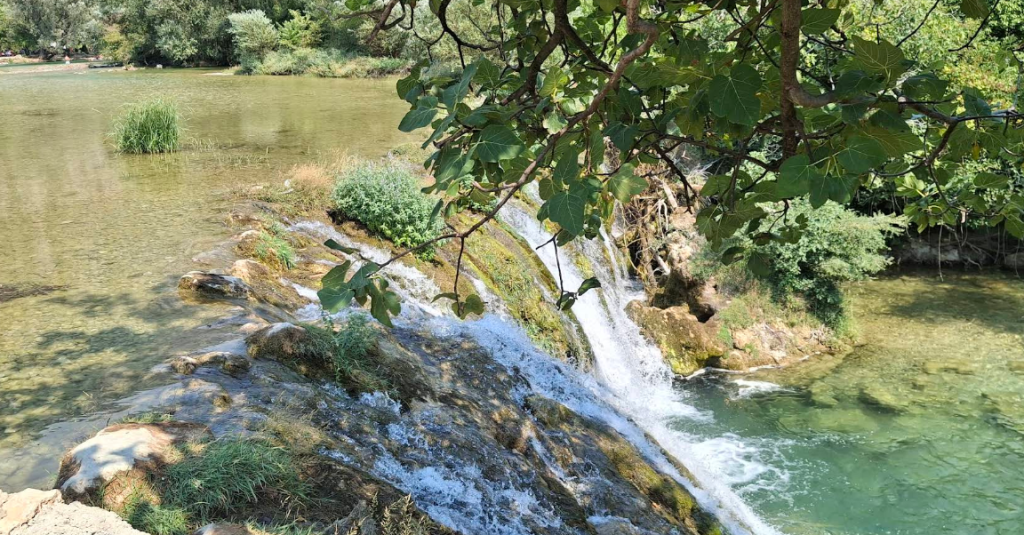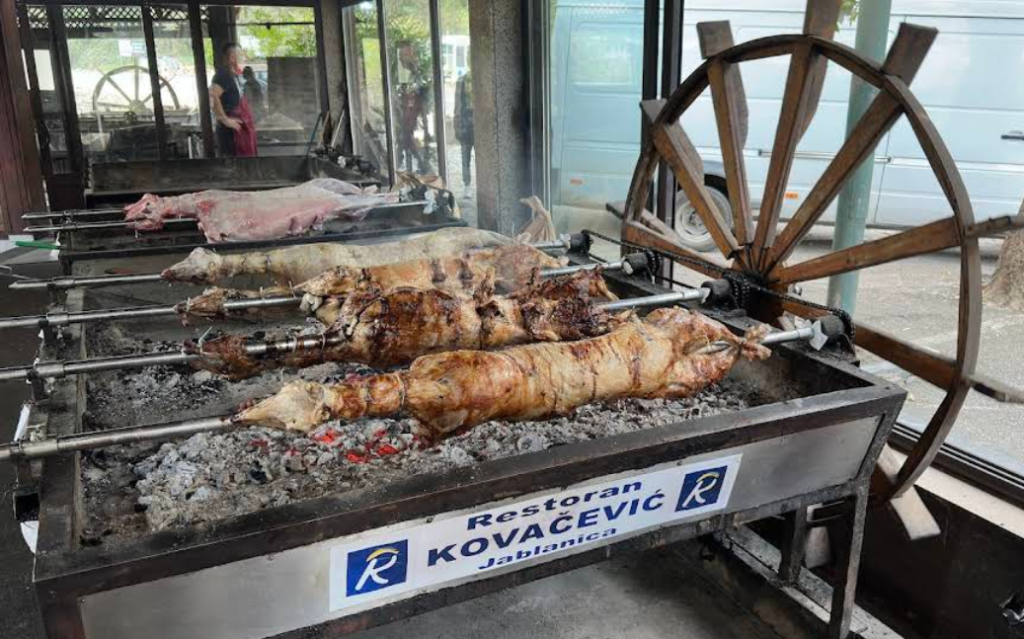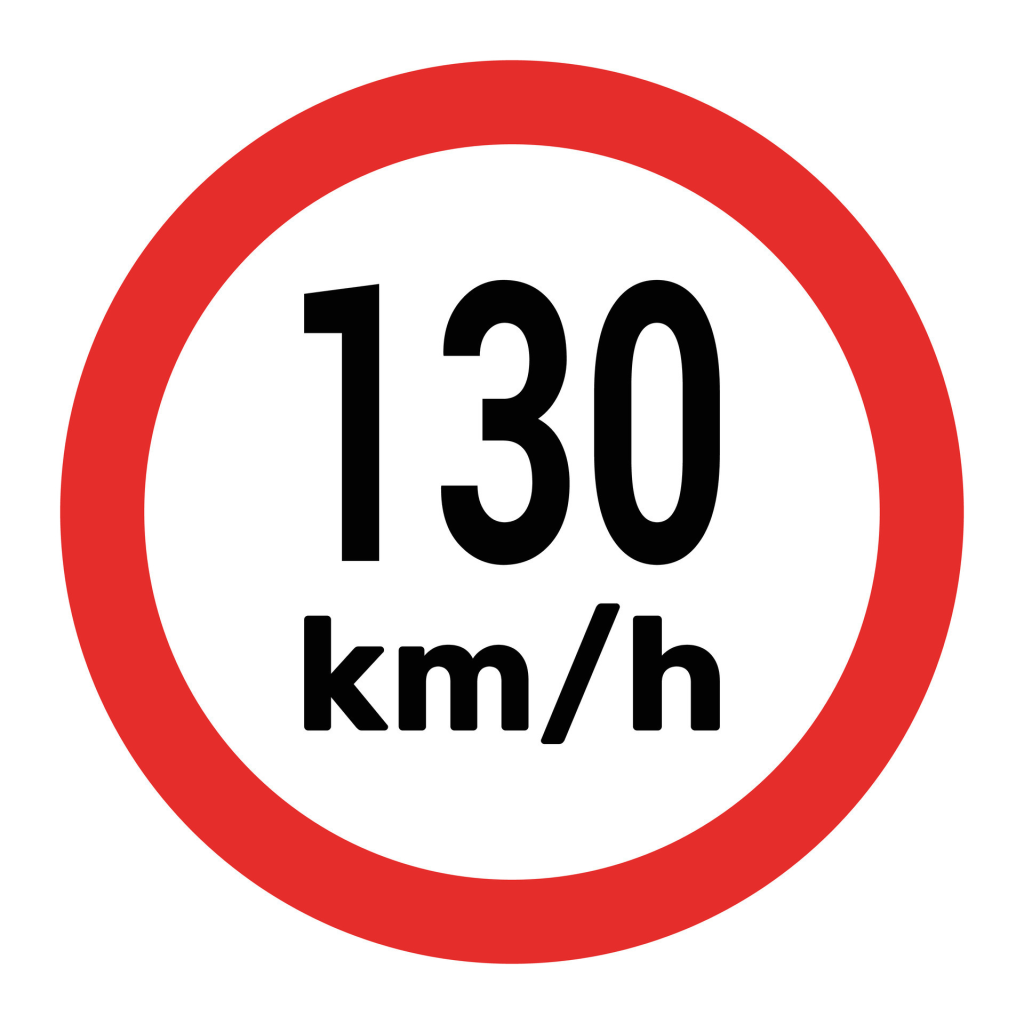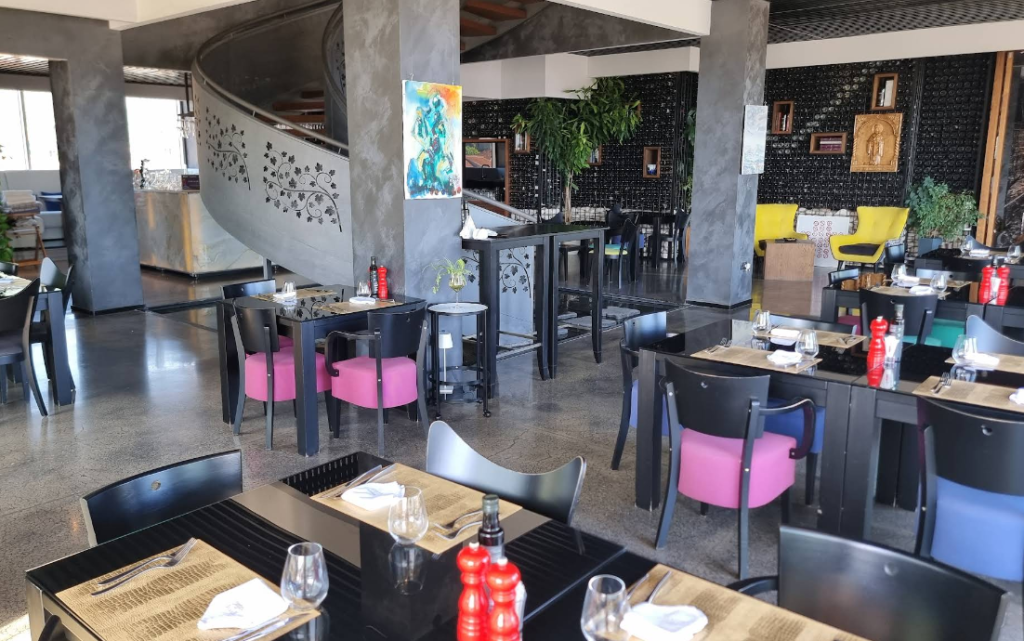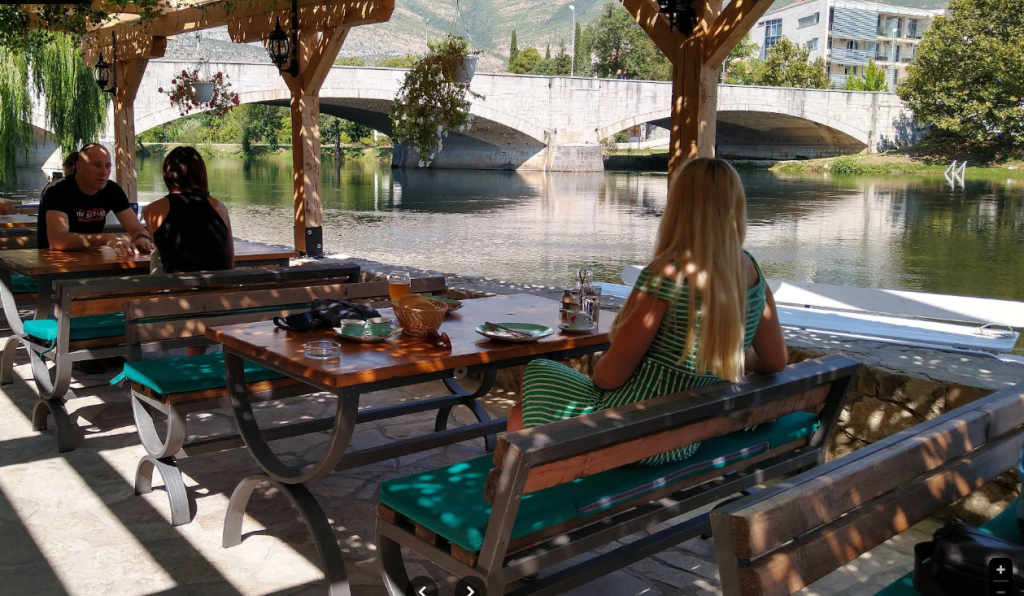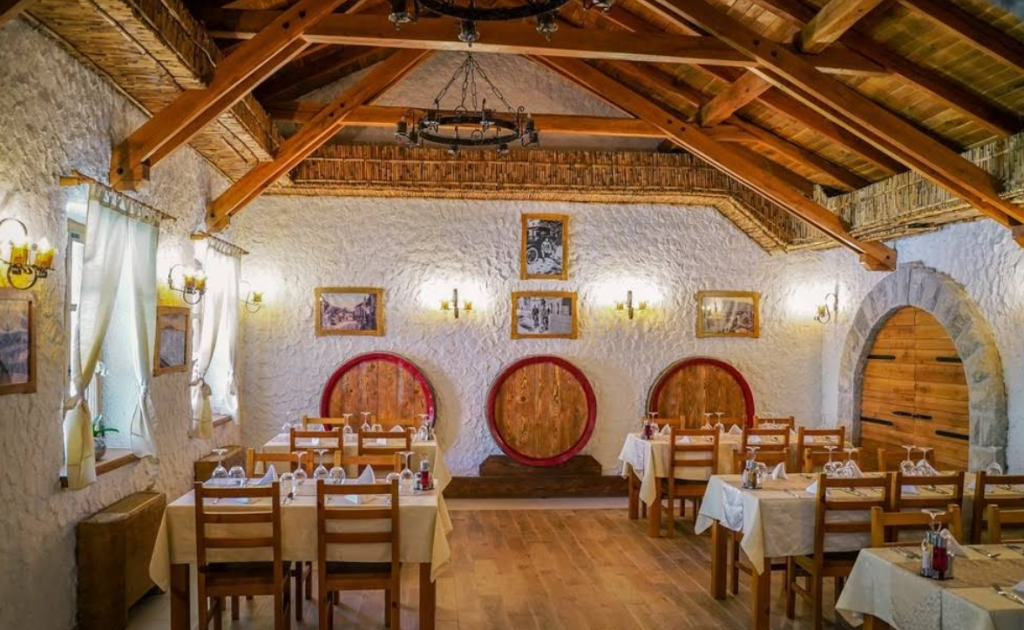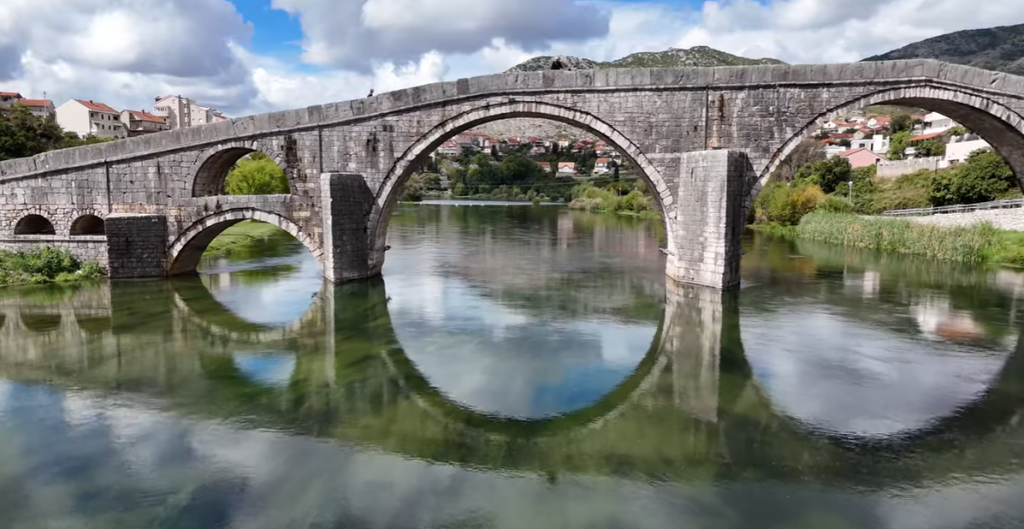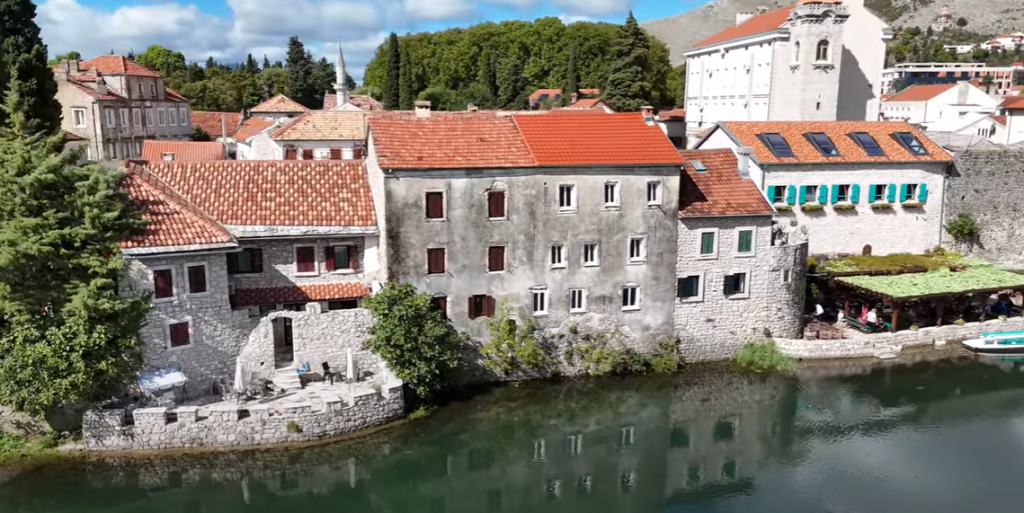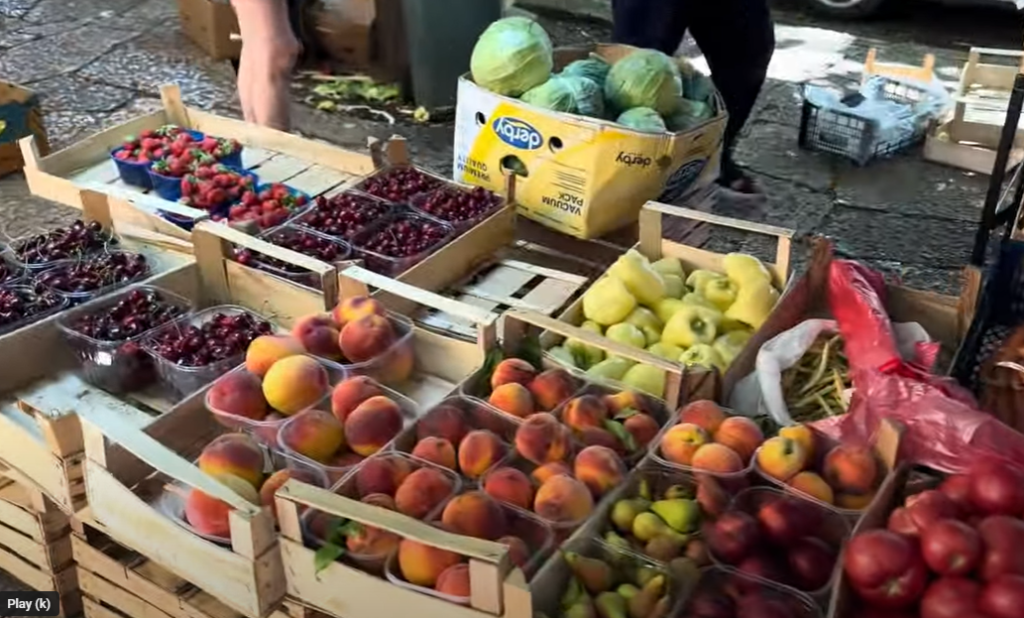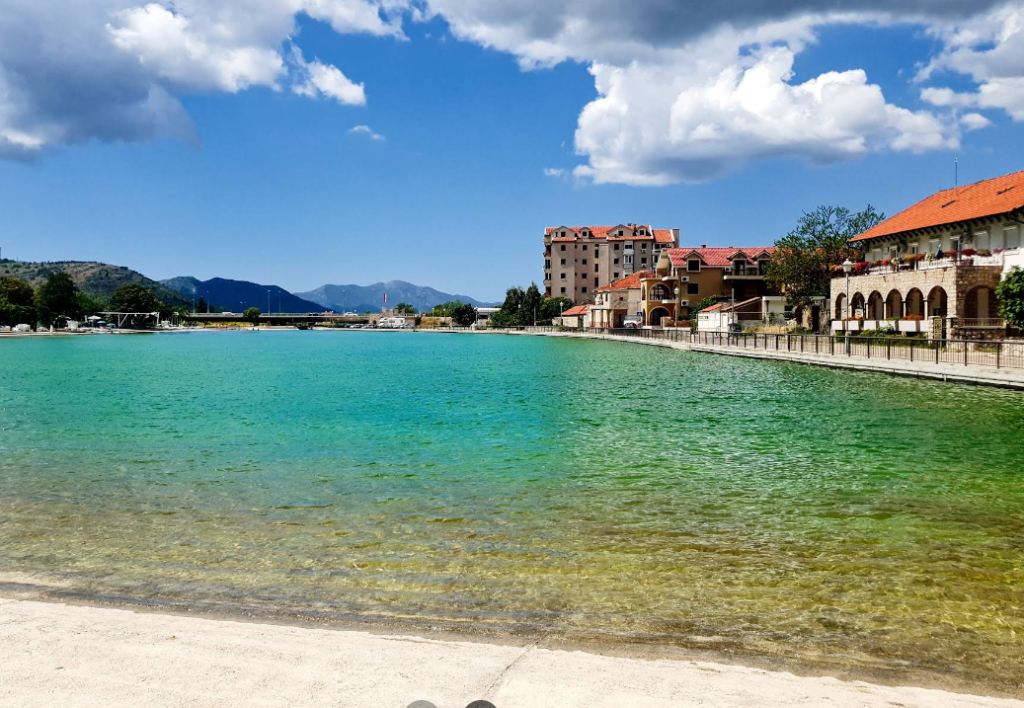Food in Bosnia and Herzegovina is more than just nourishment — it is a story of geography, tradition, and centuries of cultural exchange. In Herzegovina, grilled lamb, veal, and goat cheese dominate the table, while in Bosnia proper (the Federation), visitors discover ćevapi, burek, hearty aščinica “spoon foods,” and Ottoman-inspired sweets. Just across the border, Montenegrin mountain dishes and Dubrovnik’s Adriatic seafood add even more flavors to explore.
Trebinje sits at the crossroads of these food cultures, making it the perfect base to taste them all.
Herzegovina – Land of Lamb, Veal & Cheese
Lamb & Veal under Sač → Slow-cooked beneath a heavy iron lid covered with embers, this is Herzegovina’s signature dish. Lamb raised on wild herbs like sage and thyme gives the meat its unique aroma. Best enjoyed in rural taverns and villages around Trebinje.
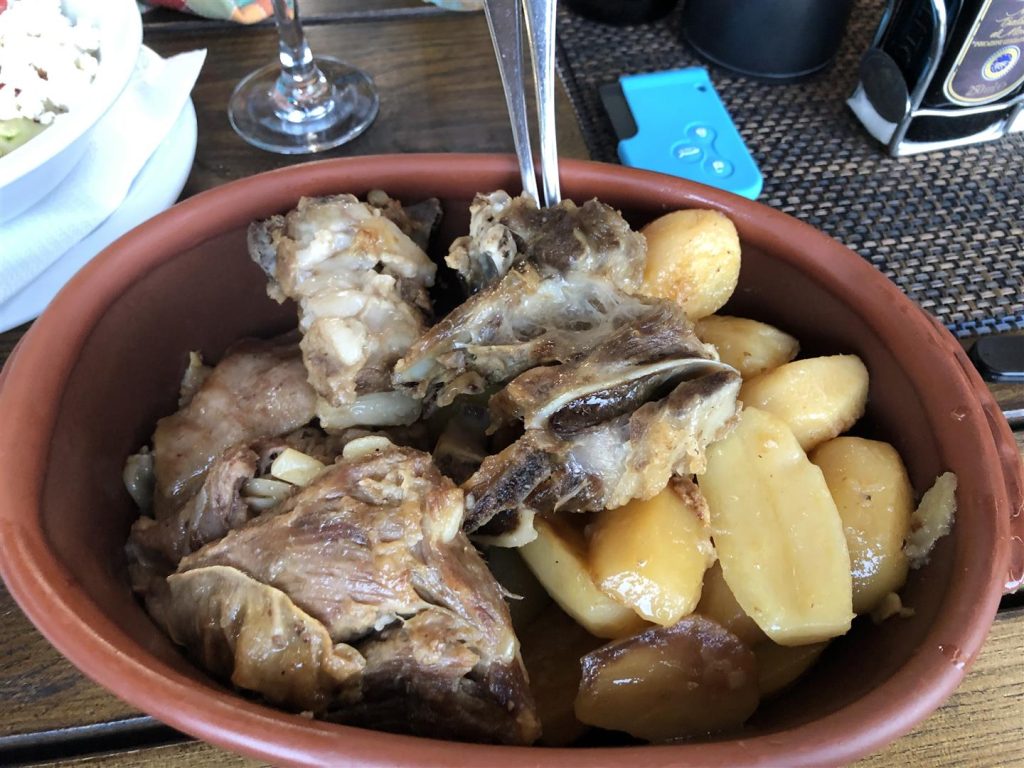
Uštipci with Goat Cheese → Small fried dough balls paired with local goat cheese and Trebinje honey. A perfect breakfast or starter plate, still popular in the countryside.
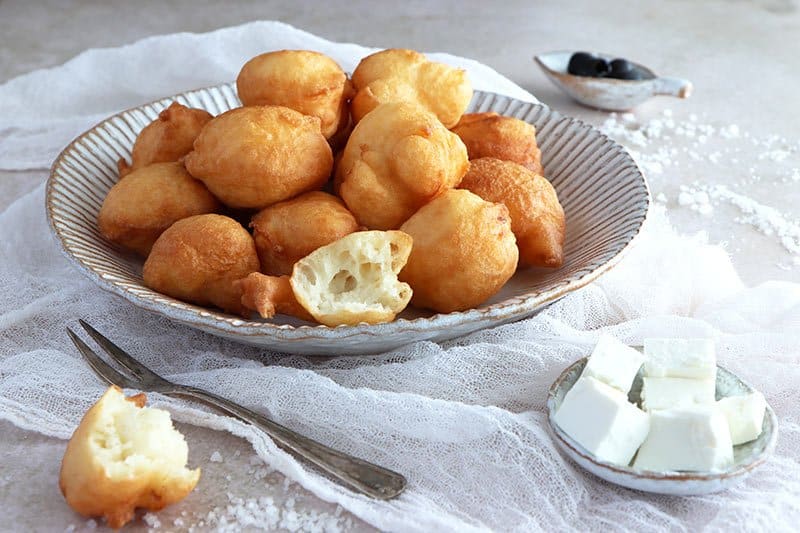
Karađorđeva Šnicla → A rolled, breaded schnitzel filled with kajmak. Popular in grill houses across BiH.
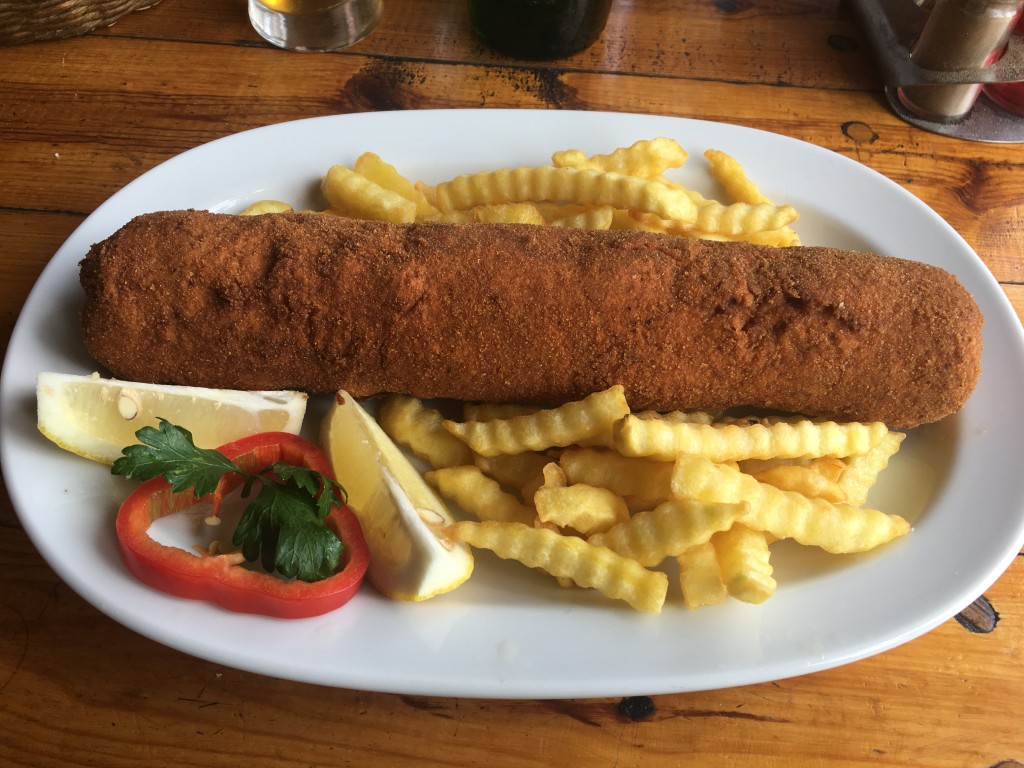
Uštipci & Palenta – A Herzegovinian Classic
A true taste of Herzegovina: uštipci (fluffy fried dough) with creamy kajmak, warm palenta topped with cheese, and a glass of kiselo mlijeko (sour milk).
Simple, filling, and made from local ingredients – this traditional breakfast is still a favorite in Trebinje and the mountain villages of Herzegovina.
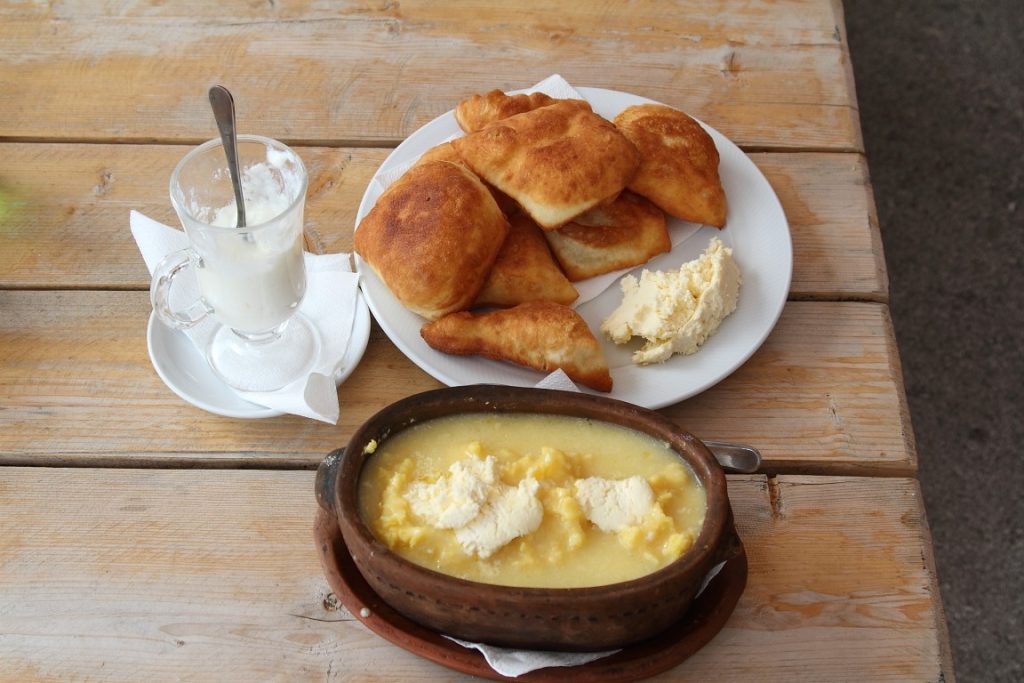
Gravče na tavče → A baked bean dish of Macedonian origin, cooked in clay pots and served in taverns across the Balkans.
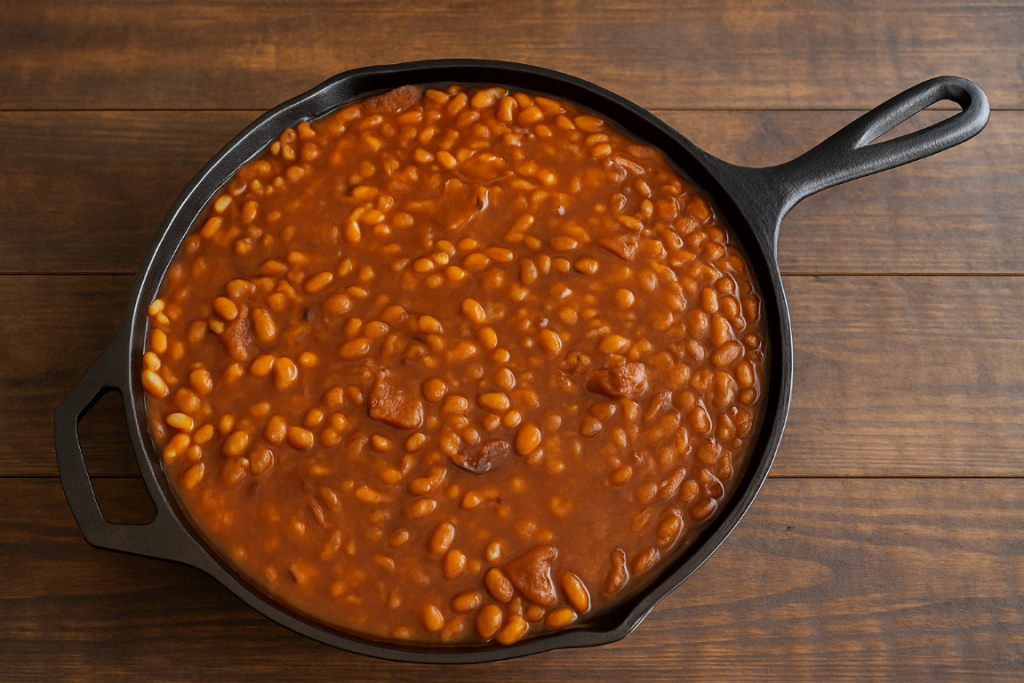
Grilled trout → served with Swiss chard (blitva) and potatoes, seasonal grilled vegetables, and a light garlic-parsley sauce. Fresh, simple, and authentically Mediterranean.
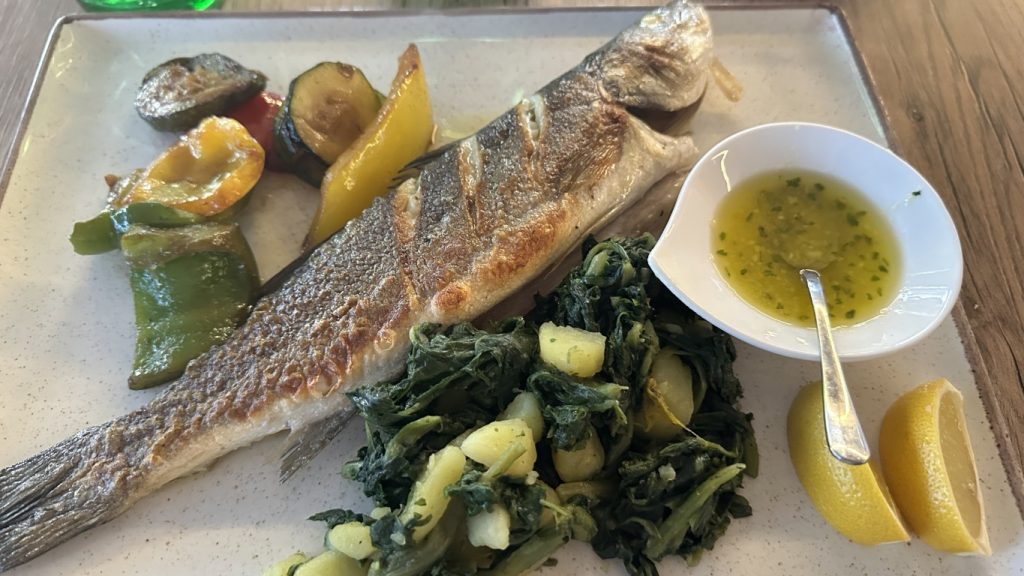
Šopska Salad → Tomatoes, cucumbers, peppers, onion, and grated white cheese. Fresh and colorful, especially good in Herzegovina’s summer season.
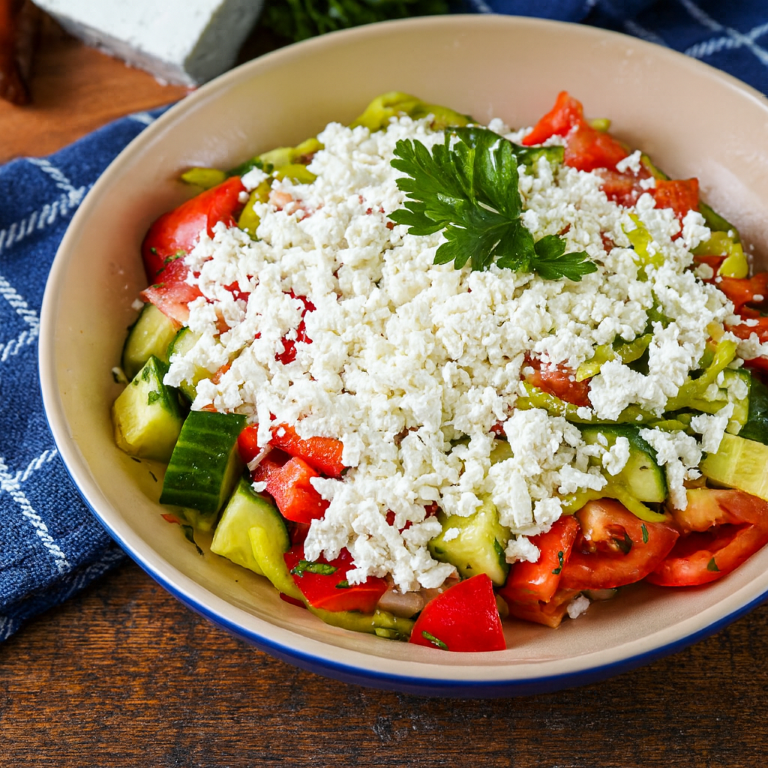
Food in Sarajevo, Mostar (Federation of Bosnia) – Ćevapi, Burek & Aščinica Food
Ćevapi → Sarajevo is the capital of ćevapi. These small grilled sausages are served in somun bread with onions. Authentic ćevapi are best tried in Sarajevo’s old Baščaršija quarter, not in Trebinje.
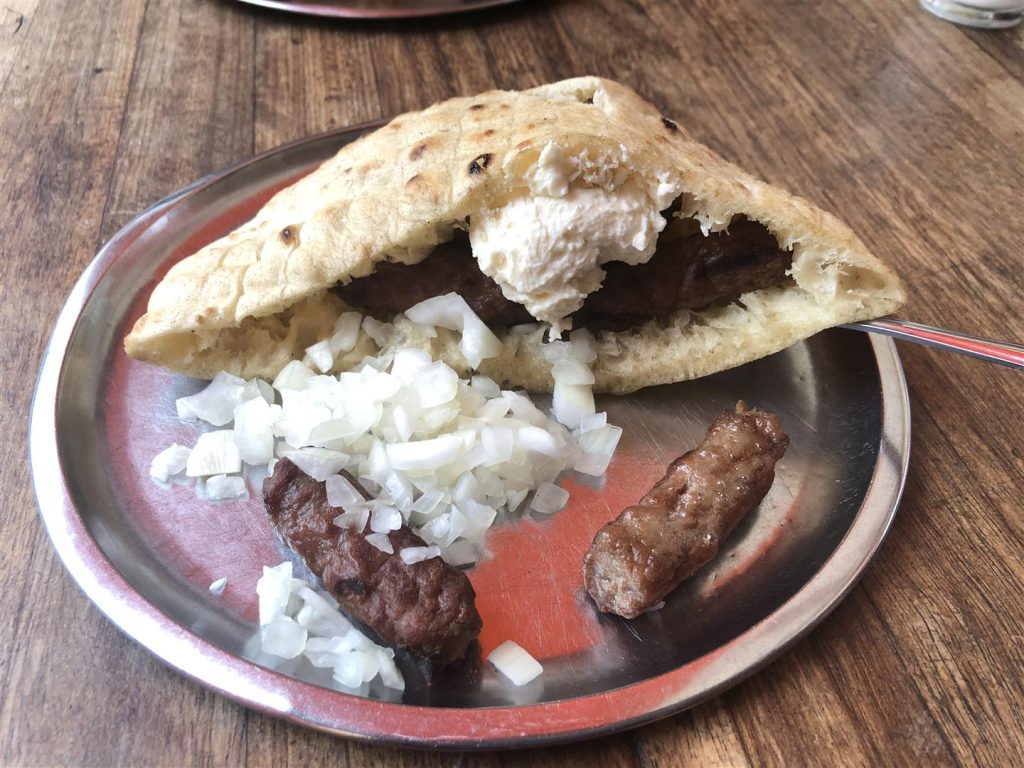
Burek & Pite → In Bosnia, “burek” always means meat pie. Other pies are named by filling: sirnica (cheese), zeljanica (spinach), and krompiruša (potato). Sarajevo buregdžinicas are the true masters.
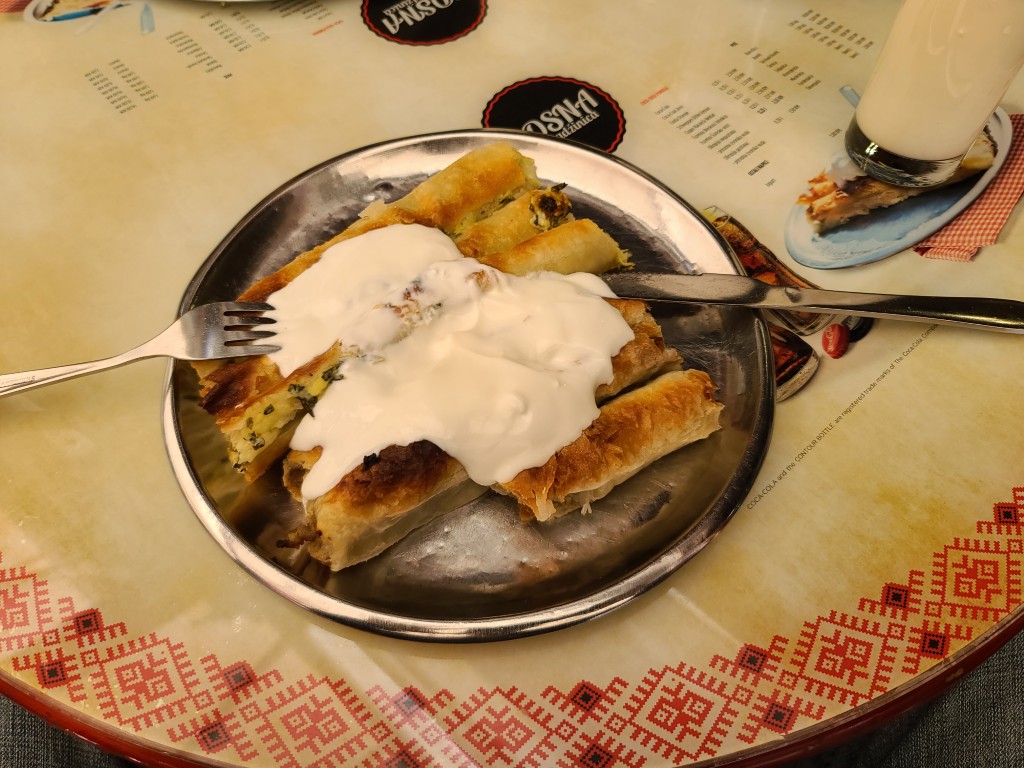
Aščinica Tradition → Unique to Bosnia (especially Sarajevo and central towns like Travnik), the aščinica serves cooked meals eaten with a spoon: begova čorba (Bey’s soup), sogan-dolma (stuffed onions), grah (beans), and sarma (stuffed cabbage rolls). This Ottoman heritage is still part of everyday life in the Federation.
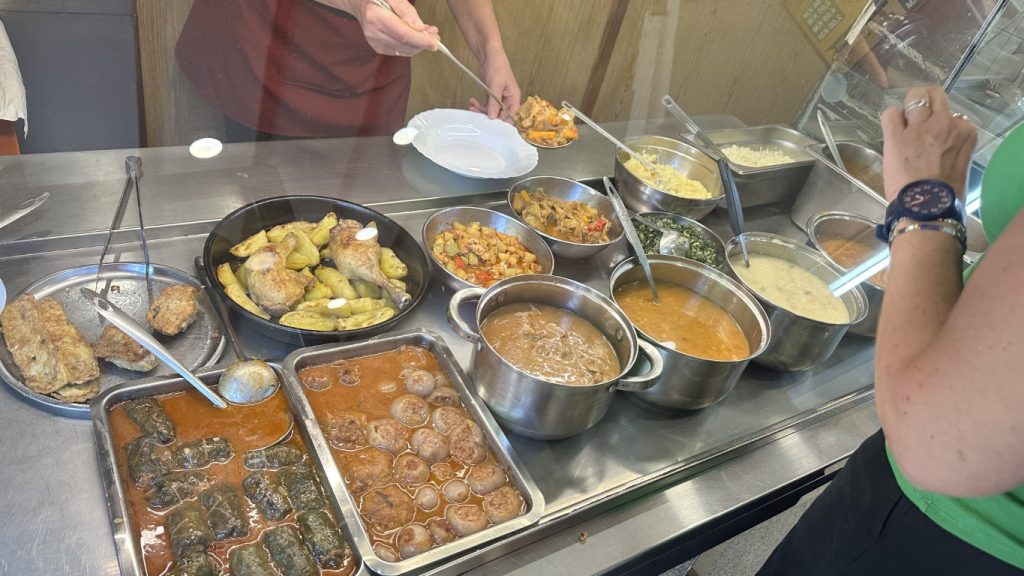
Sweets – The Ottoman Legacy Perfected in Sarajevo
Much of Bosnia’s sweet tradition comes from the Ottoman Turks. Yet, locals will tell you: what you taste in Sarajevo is often even better than in Istanbul. Bosnia took these recipes and made them richer, sweeter, and more indulgent.
Baklava → Layers of filo pastry filled with walnuts or pistachios, soaked in syrup. In Sarajevo, baklava shops still follow recipes perfected over centuries.
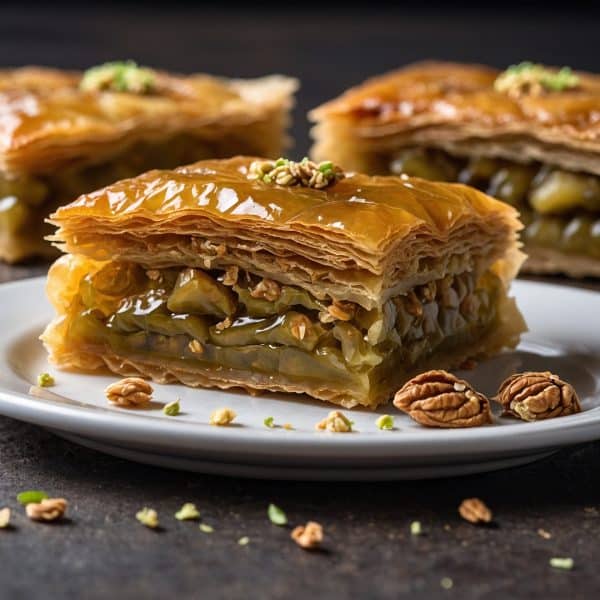
Tulumba → Golden, syrup-drenched fried dough sticks — sticky, sweet, and beloved as a quick treat.
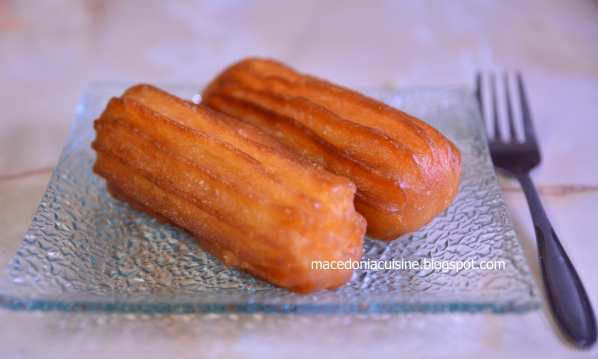
Kadaif (Kadaif) → Thin shredded pastry baked with nuts and syrup, sometimes stuffed with cream.
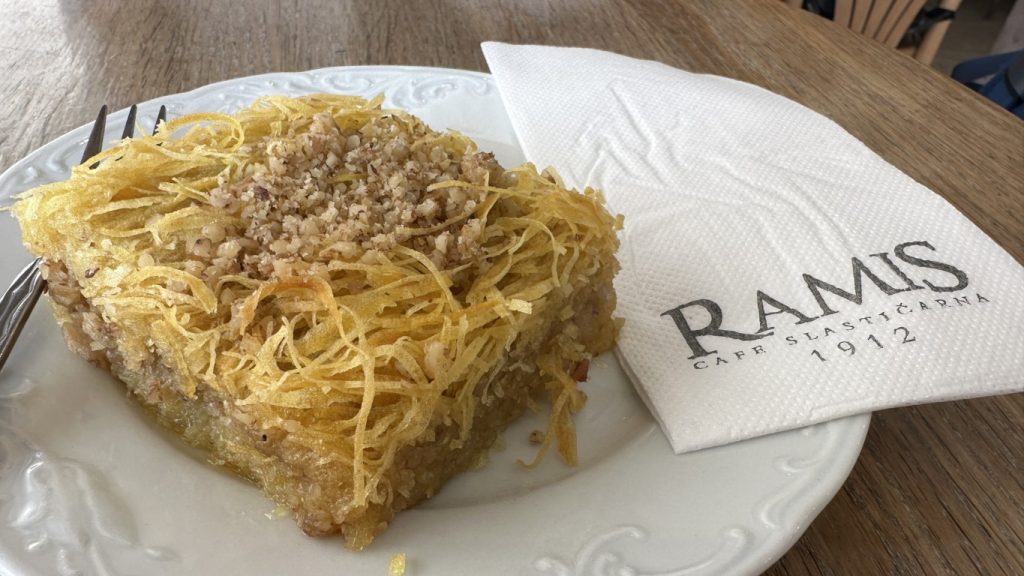
Where to try:
Sarajevo’s Baščaršija is full of pastry shops and cafés that specialize in these Ottoman-inspired sweets. Pair them with strong Bosnian coffee for the perfect finish to any meal.
Montenegrin Cuisine – Mountain & Sea
Montenegro blends mountain flavors with Adriatic seafood.
Njeguški pršut → Smoked ham and aged cheese from the mountain village of Njeguši.
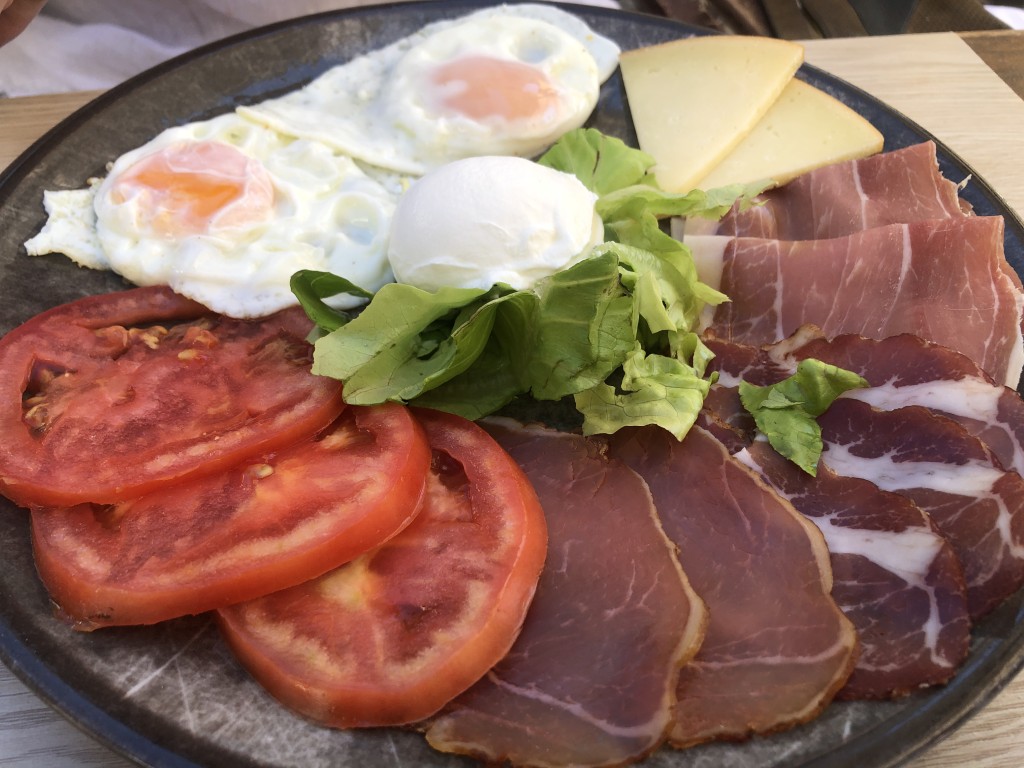
Kačamak & Cicvara → Hearty cornmeal and cheese dishes from the Montenegrin highlands.
Seafood in the Bay of Kotor → Fresh fish, mussels, and calamari, grilled simply with olive oil and garlic.
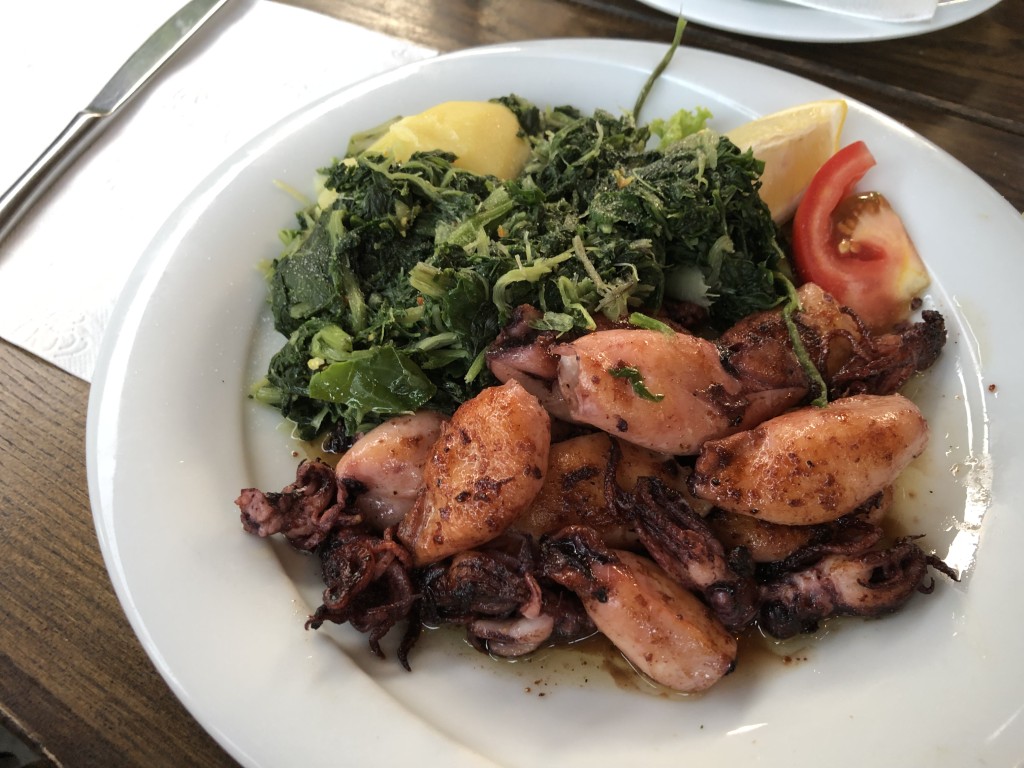
From Trebinje, Montenegro is less than an hour away, making it easy to enjoy both inland specialties and coastal seafood.
Dubrovnik & the Dalmatian Coast
Croatia’s southern coast adds a Mediterranean touch to the regional food map.
- Fresh Adriatic Fish & Octopus Salad → Staples of Dubrovnik’s seaside restaurants.
- Black Risotto (Crni Rižot) → A seafood risotto made with cuttlefish ink, olive oil, and white wine.
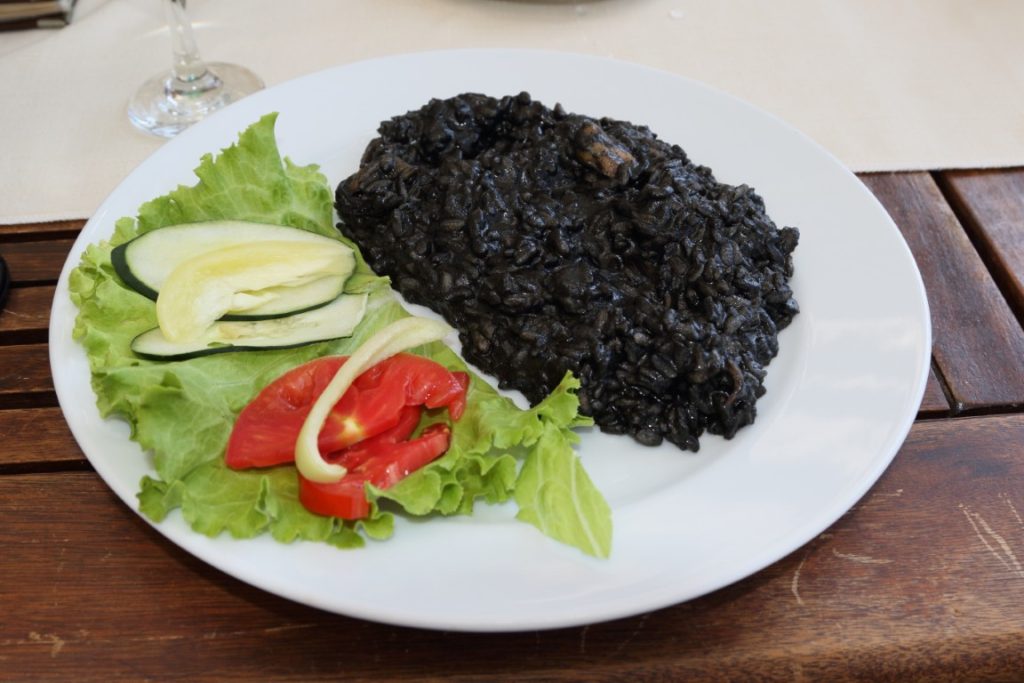
- Peka (Dalmatian Sač) → Similar to Herzegovinian cooking under sač, but often featuring seafood or mixed meats.
- Rozata Dessert → A Dubrovnik custard pudding flavored with rose liqueur, a cousin of crème caramel.
Just 30 minutes from Trebinje, Dubrovnik is the ideal place to enjoy seafood with a view of the Adriatic.
Why Trebinje is the Perfect Food Base
Trebinje lies at the heart of four food traditions:
- Herzegovina → lamb, veal under sač, uštipci with goat cheese, wine and rakija.
- Federation Bosnia → ćevapi, burek, aščinica spoon-foods, and Ottoman sweets perfected in Sarajevo.
- Montenegro → Njeguši prosciutto, mountain cornmeal dishes, and coastal seafood.
- Dubrovnik → Adriatic fish, black risotto, and Mediterranean desserts.
From one city, you can taste the best of the Balkans and Adriatic within a short drive.

